Part 2 - Tokyo, Japan

Part 2 - Tokyo
We started the day with a breakfast in the hotel restaurant on one of the top floors of the tower. While trying various dishes from both the eastern and western cuisine, we enjoyed the view from the fully glassed room.
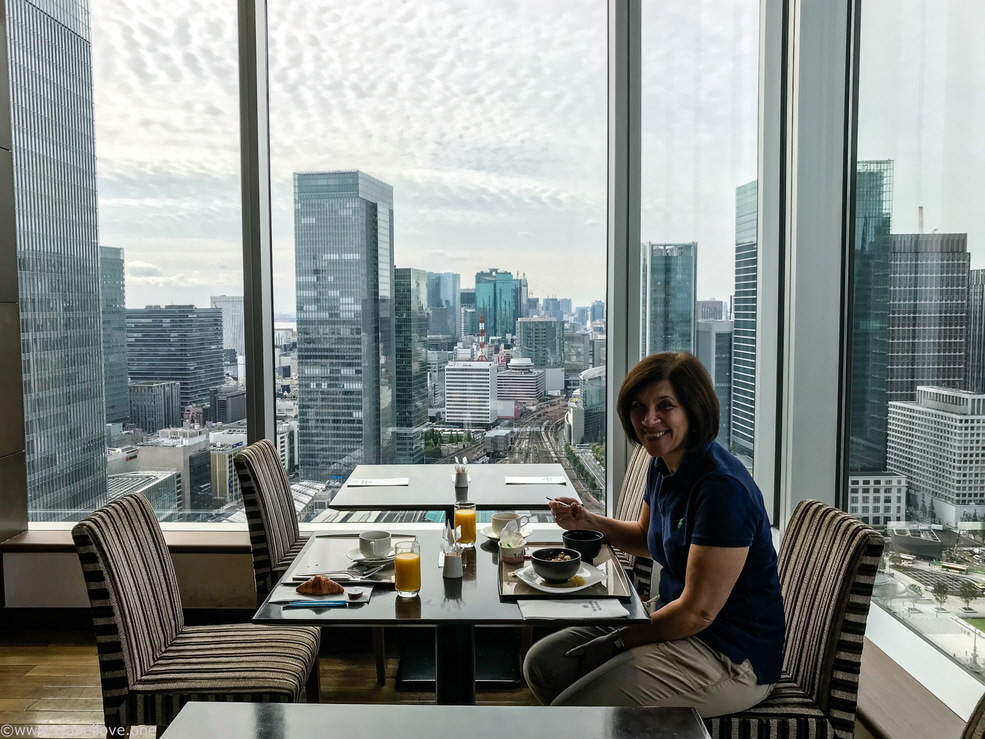
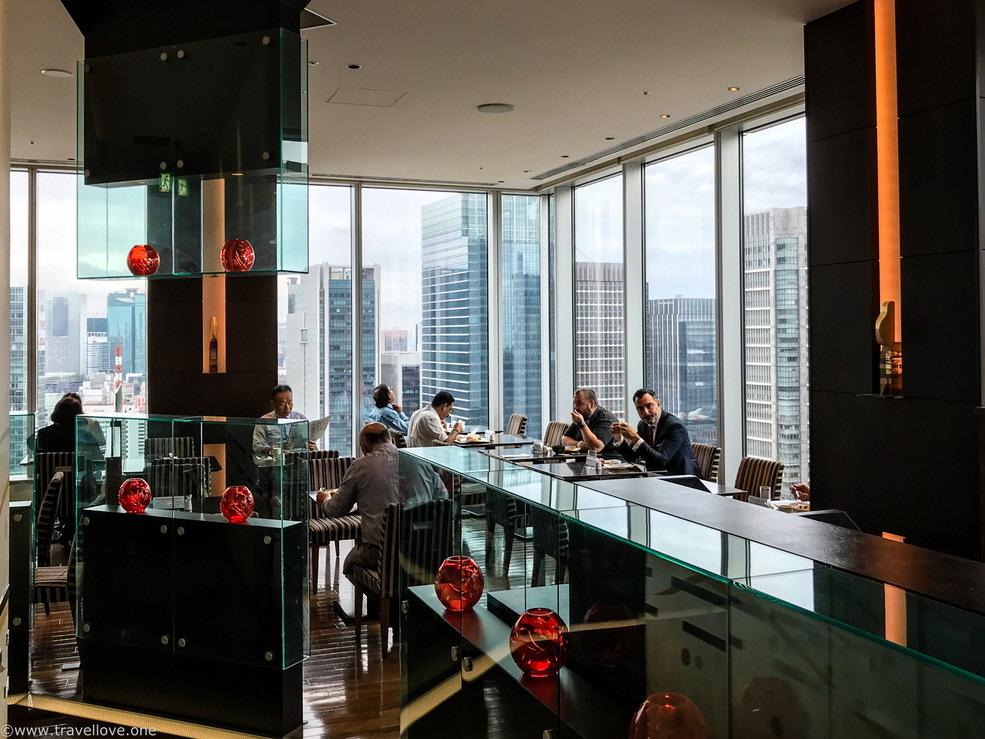
Birgit particularly liked the Japanese breakfast specialties, which I couldn’t appreciate as much as they were too “fishy” for my taste.
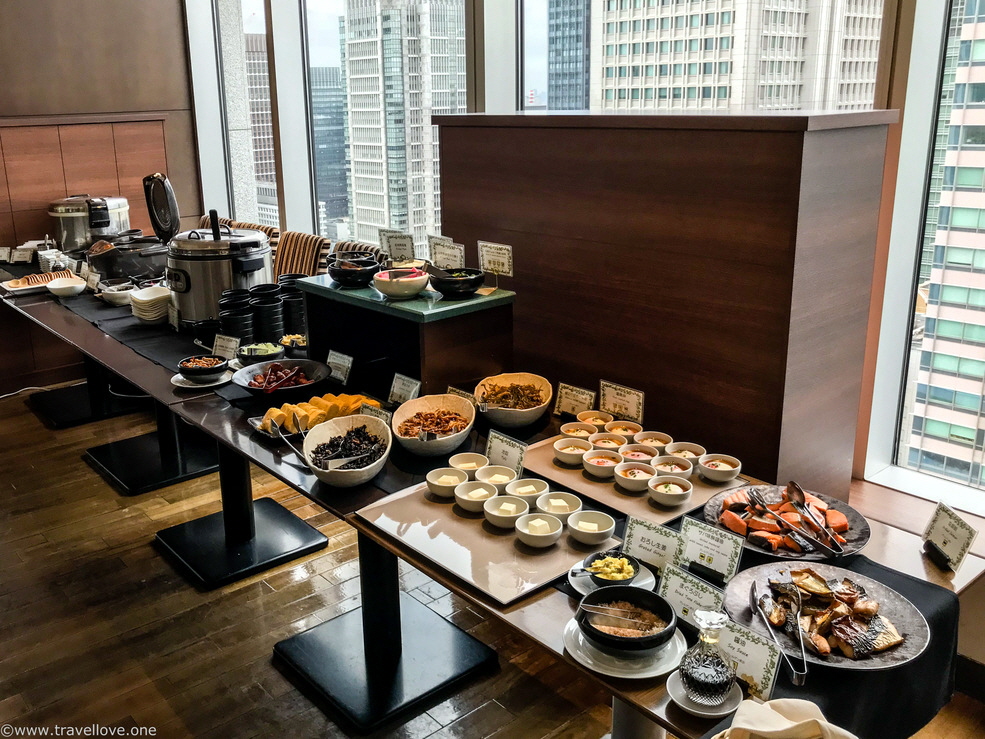
As on almost all of our travels, we had booked all of our tours in Japan with local guides. During my research for possible options I had come across Triple Lights (www.triplelights.com), offering tours throughout Japan. The website was well designed, you could watch introductory videos of their guides, and the exchange with the selected guides was very friendly and cooperative. So it made sense to book all our tours with this operator and even get a discount on our tours.
For our second day in Tokyo we had booked a tour with Yoko from Triple Lights. Via Cruise Critic we had found two other couples who joined us. According to Yoko, our hotel was the best starting point, so that morning we met in our hotel lobby with Marion and David from London and René-Pierre and Jacinthe from Canada and, of course, Yoko, our tour guide.
After brief introductions we were off, and Yoko took us to the subway which we took to Asakusa Station.
The district of Asakusa is known for the Sensō-ji, the oldest and most important Buddhist temple in Tokyo. But before going there, Yoko took us to the building of the Tourist Information just across the street, where we took a free lift to a viewing platform.
From there we had a good view of the the golden Asahi Brewery headquarters, designed by Philippe Starck, dominated by the 634-meter high (2,080 ft.) Tokyo Sky Tree TV tower. The Sky tree is the hightest TV tower and the second tallest building on earth after Burj Khalifa in Dubai.
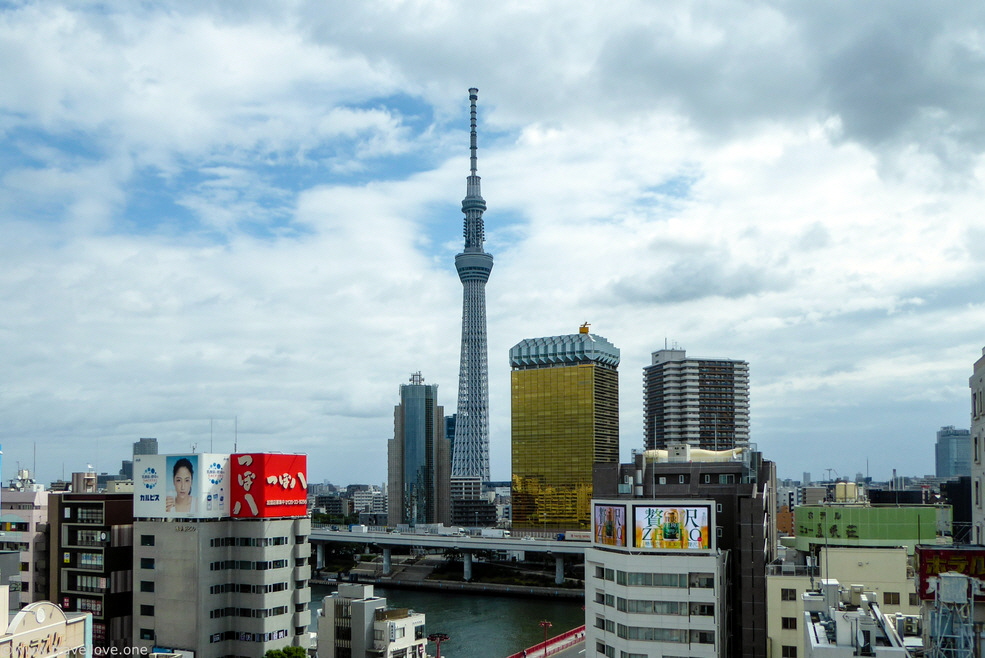
It was also an ideal spot for a photo of our little group.
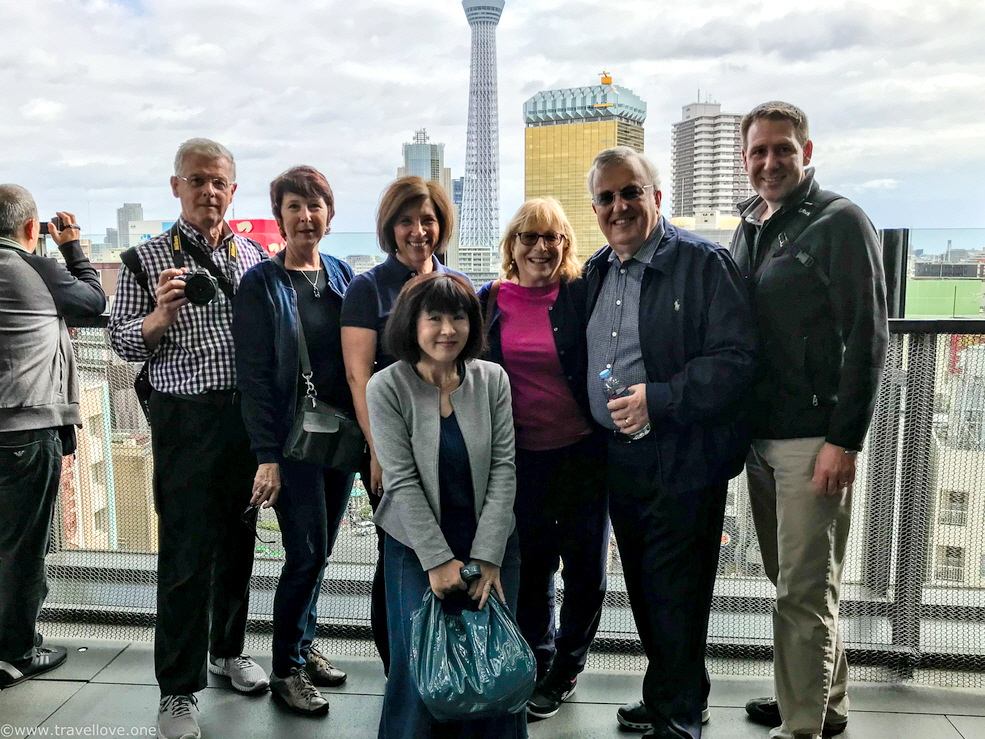
From the other side of the lookout we could already see our next destination, the Sensō-ji temple, for which Yoko gave us a short explanation before we left the building.
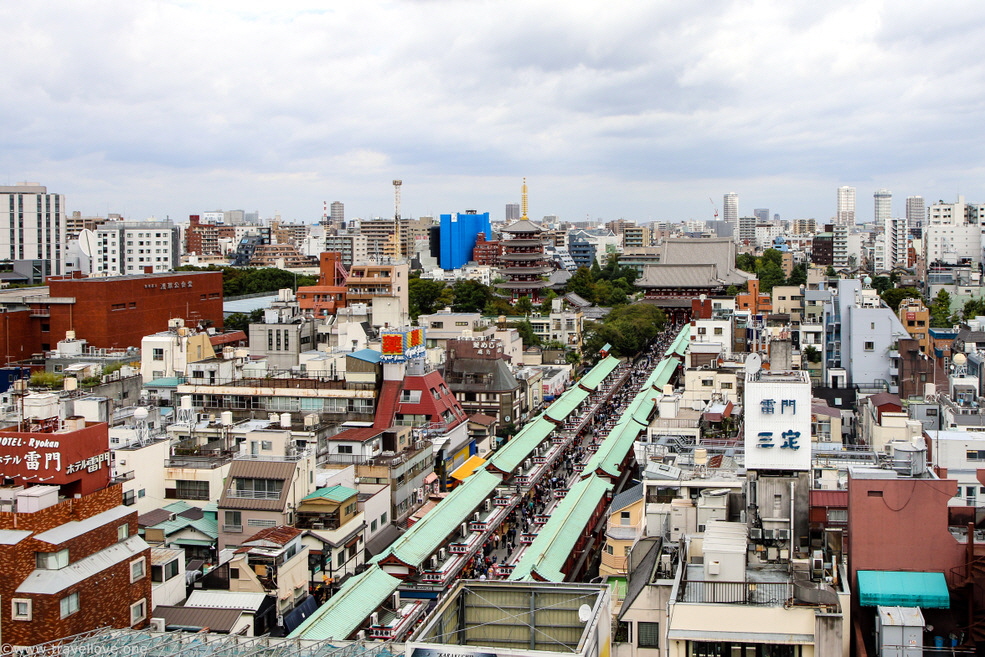
Then we went back down to visit the temple itself. Its history goes back a long way. Legend has it that in 628 AD three fishermen found a golden statue of the goddess Kannon in their net, which was worshipped there from then on. Today, the Sensō-ji is visited by a large number of tourists from home and abroad every year.
The entrance to Nakamise, the street leading up to the temple, is dominated by the Kaminari-mon („Thunder Gate“). A huge, red paper lantern marks this imposing structure.
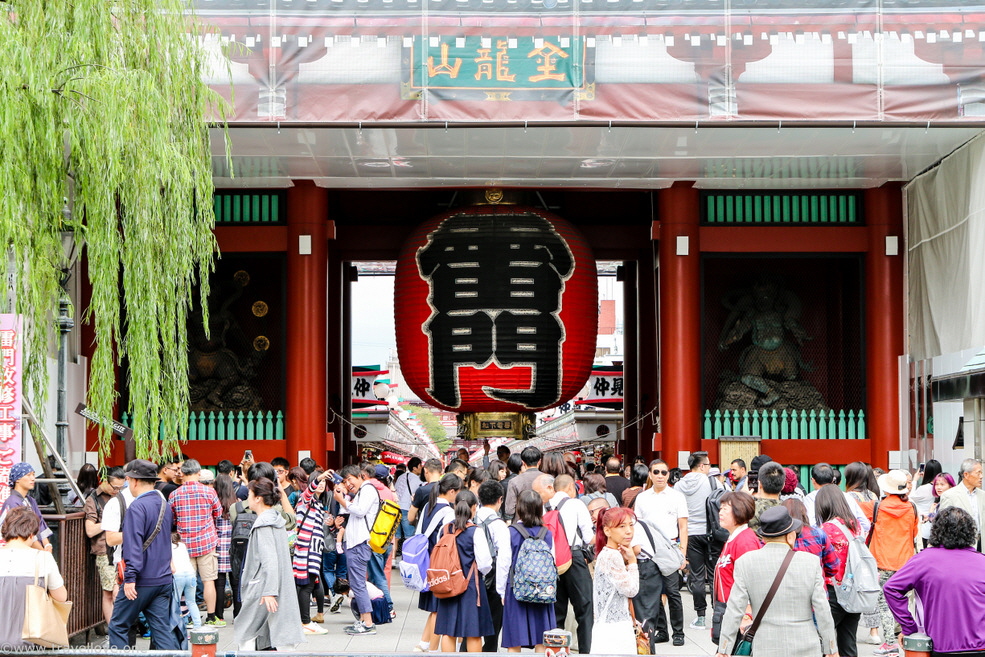
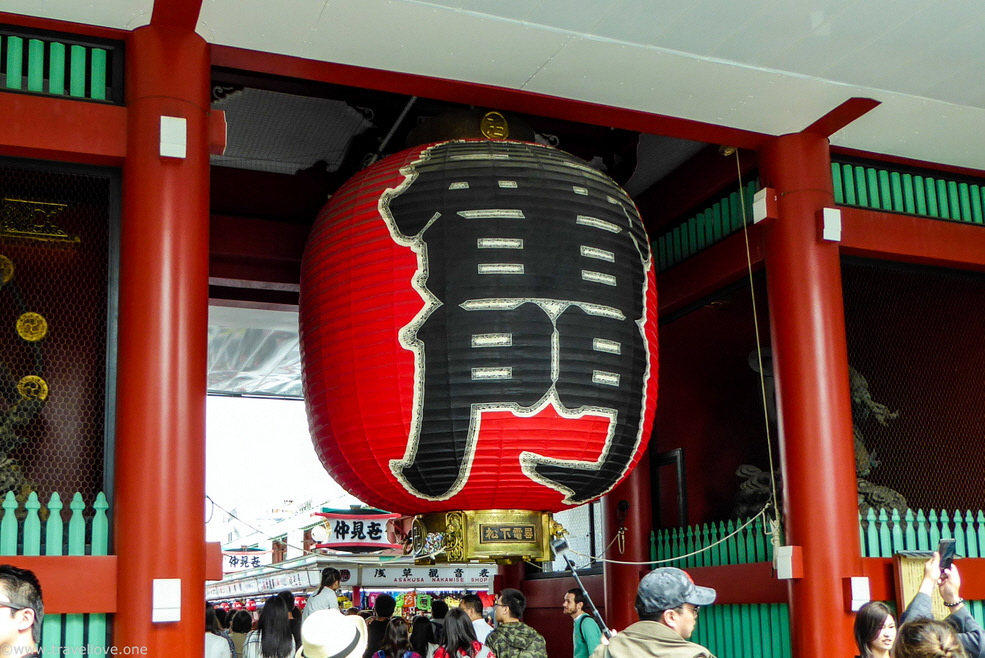
The Nakamise hosts many traditional shops and food stalls selling traditional dishes such as homemade noodles, sushi and tempura.
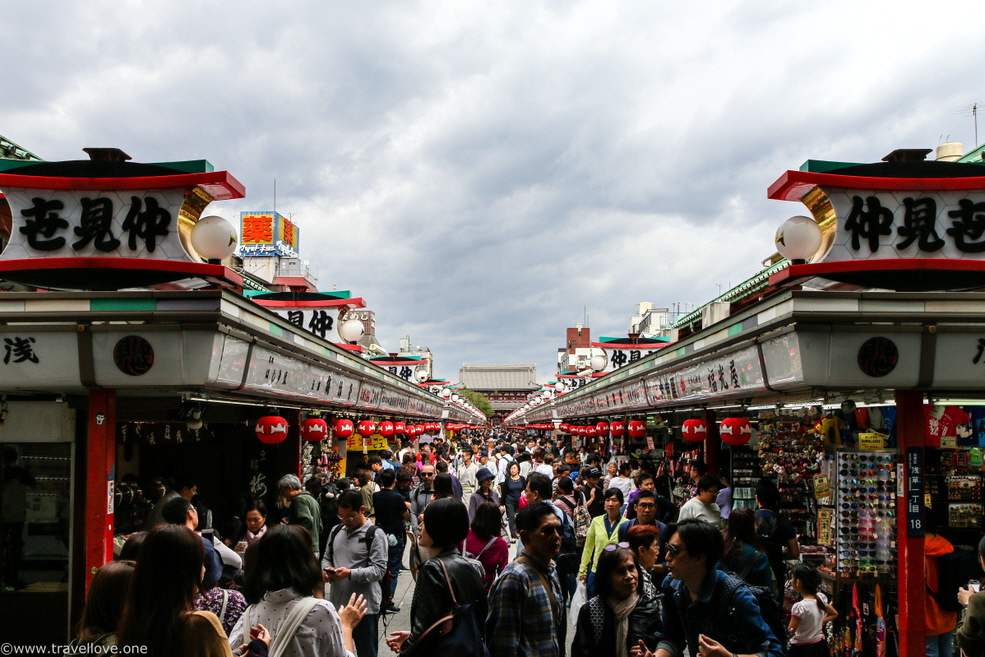
At the end of the strip mall you pass through the great wooden Hozomon Gate before reaching the main hall of the temple. This gate is also decorated with paper lanterns, attracting the admiration of visitors in traditional garments.
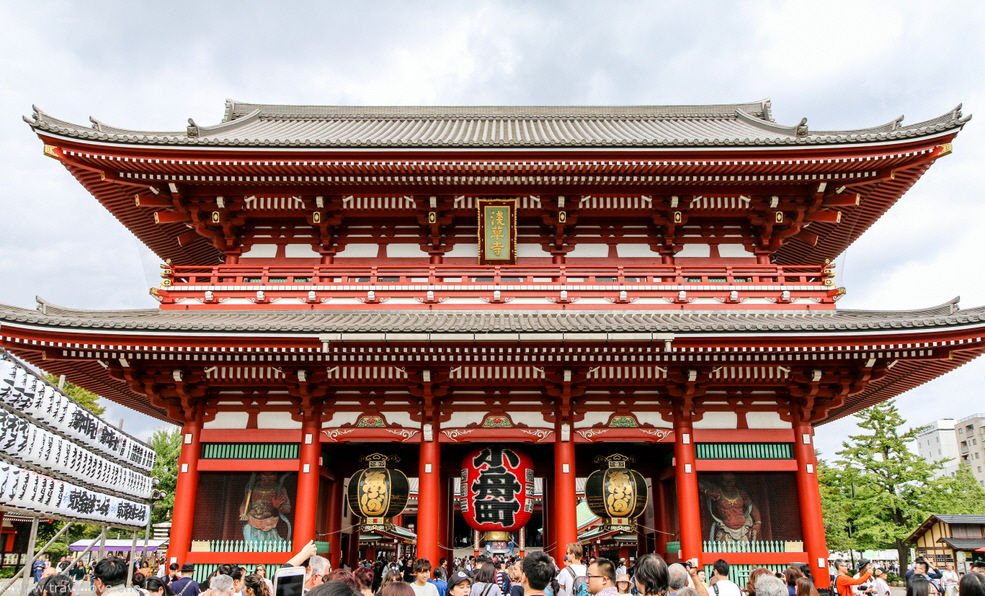
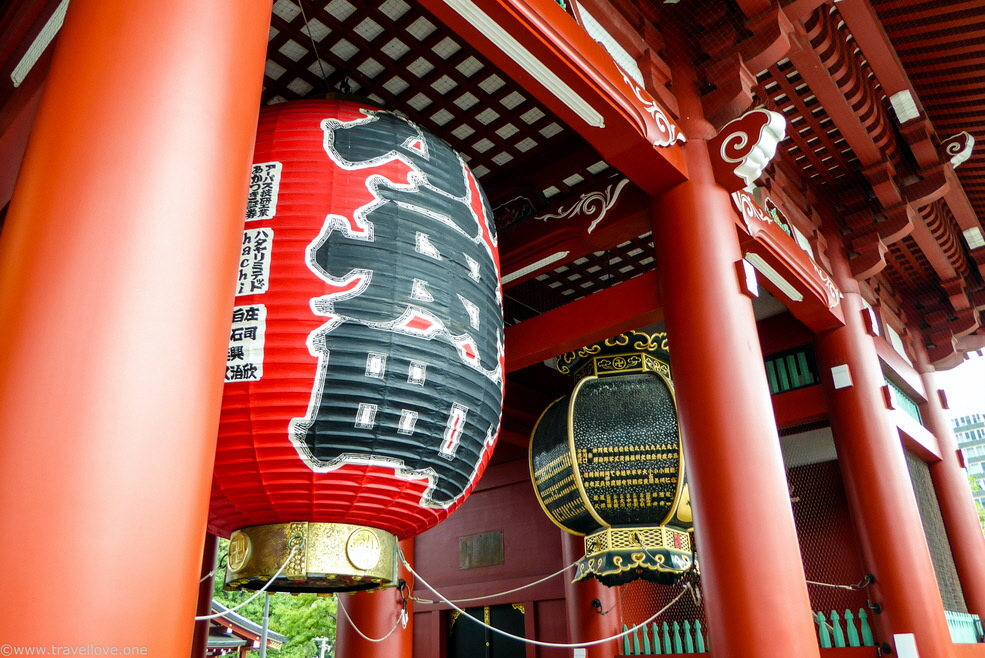
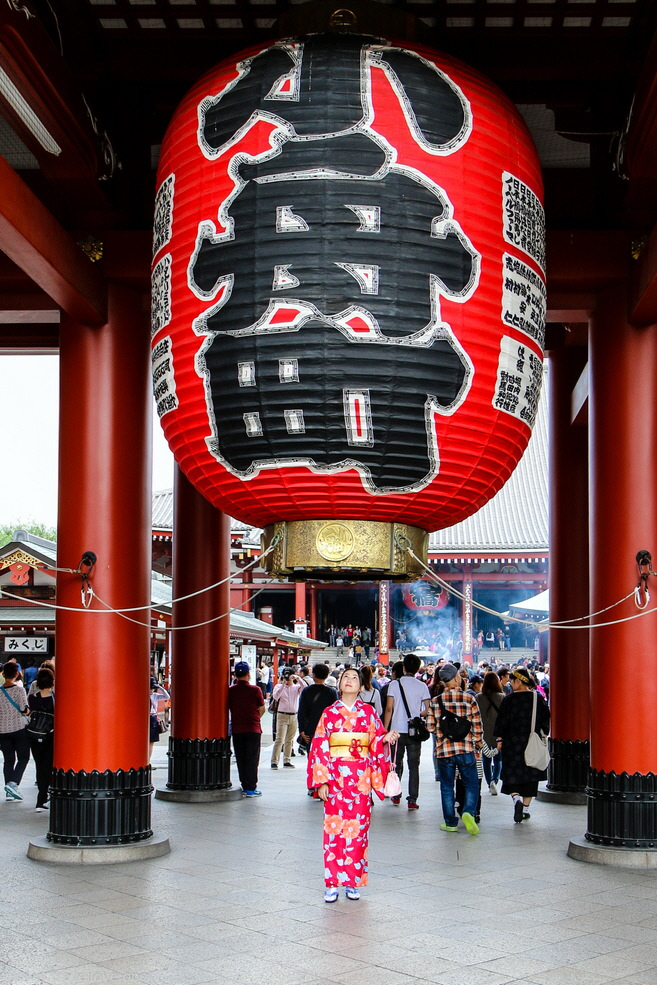
Between the Hozomon Gate and the main hall, there is a magnificent five-story pagoda on the left and a small garden on the right.
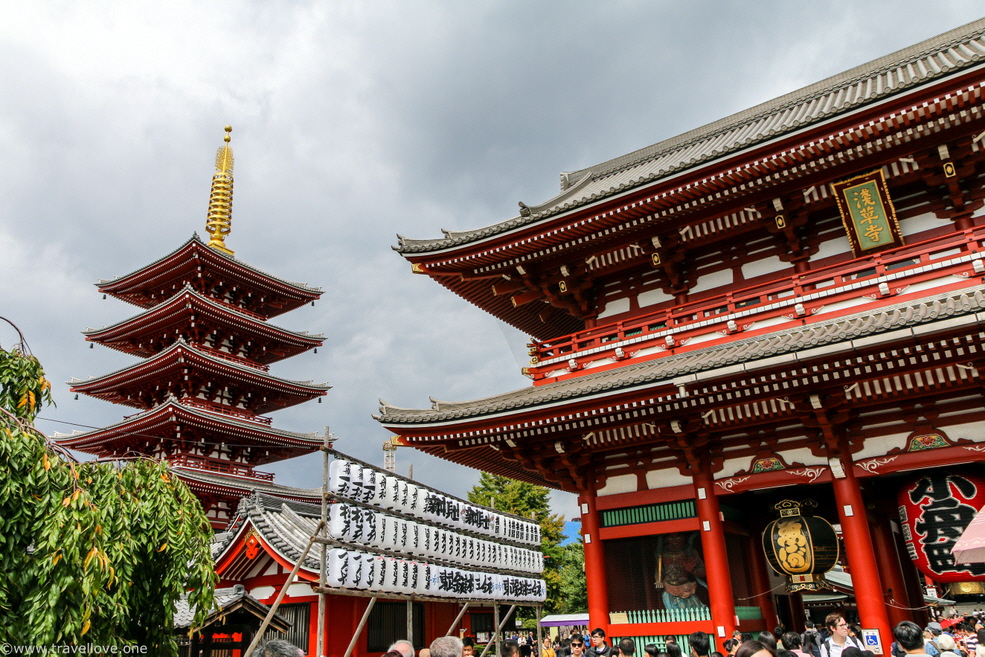
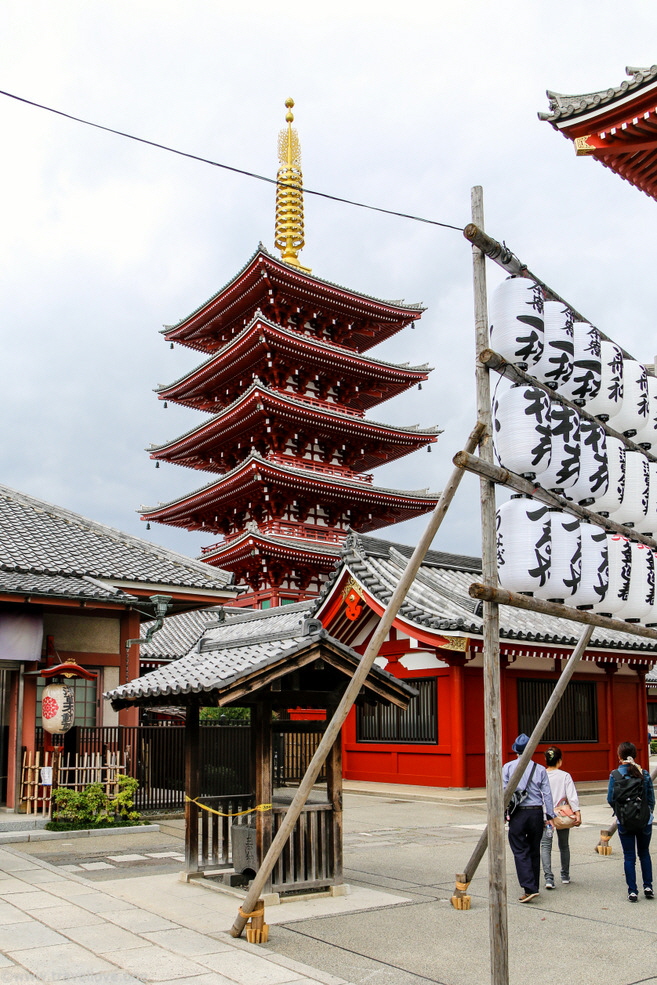
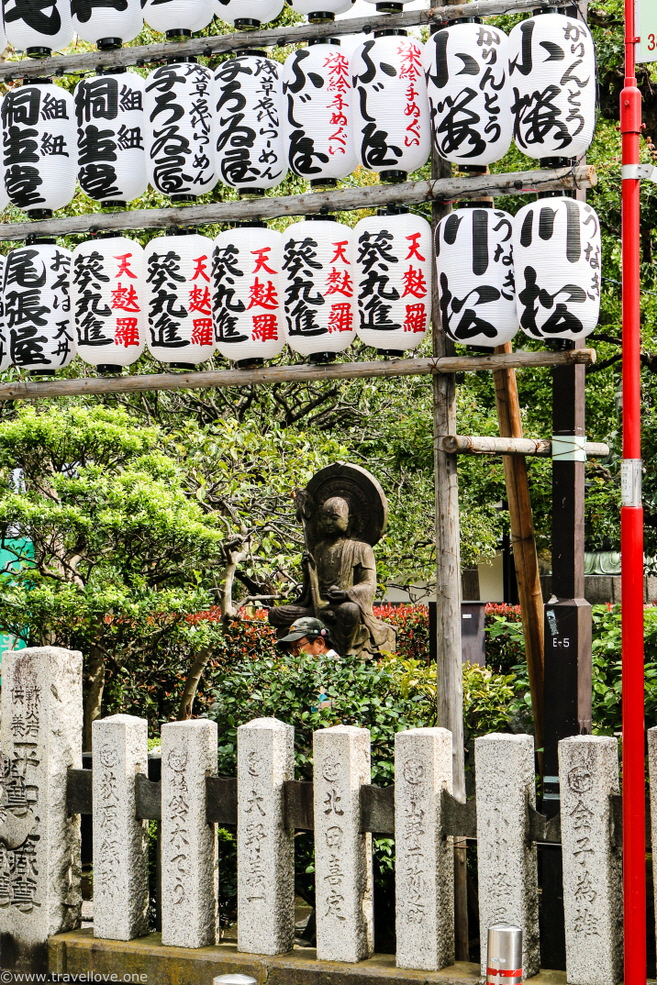
And more visitors in beautifully colorful kimonos.
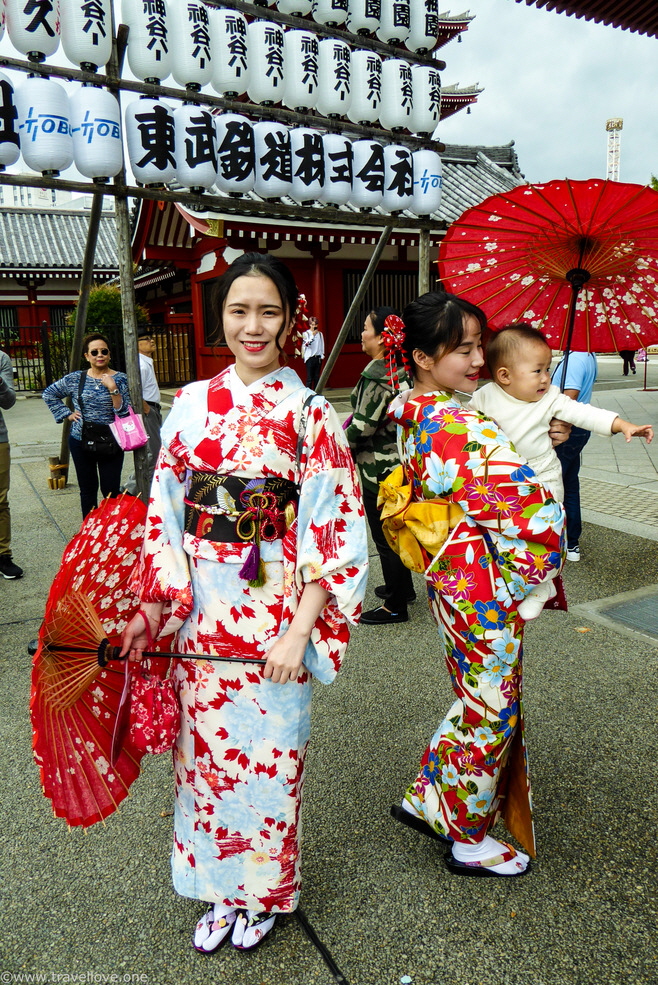
On the final stretch towards the main hall, the air was thick with smoke and the scent of incense. In addition to the traditional cleansing with small water ladles at a sideaward well, the smoke is also said to serve the cleansing before praying in the main hall.
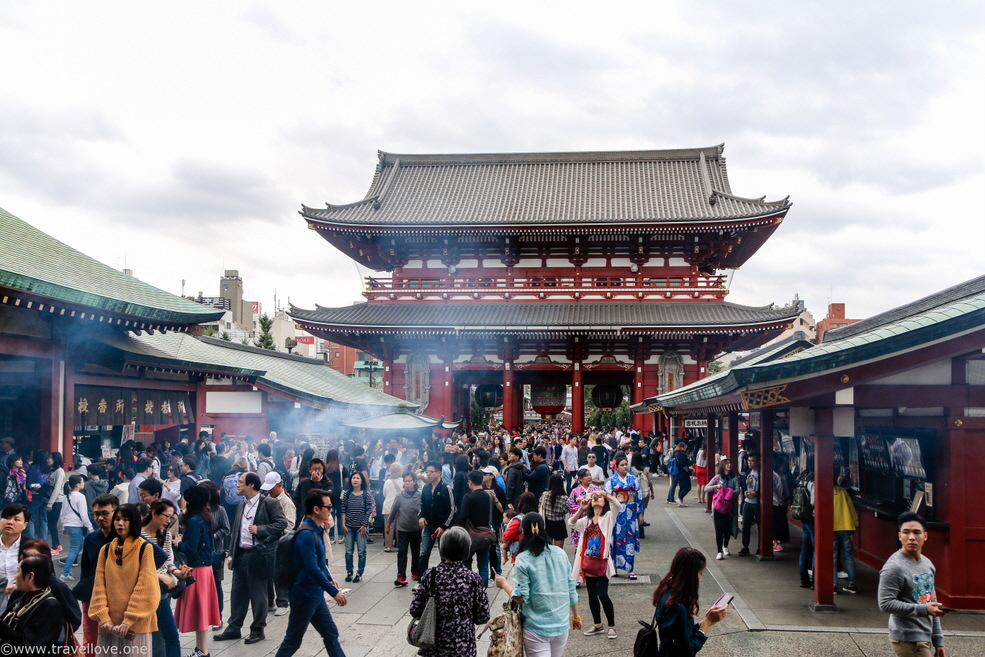
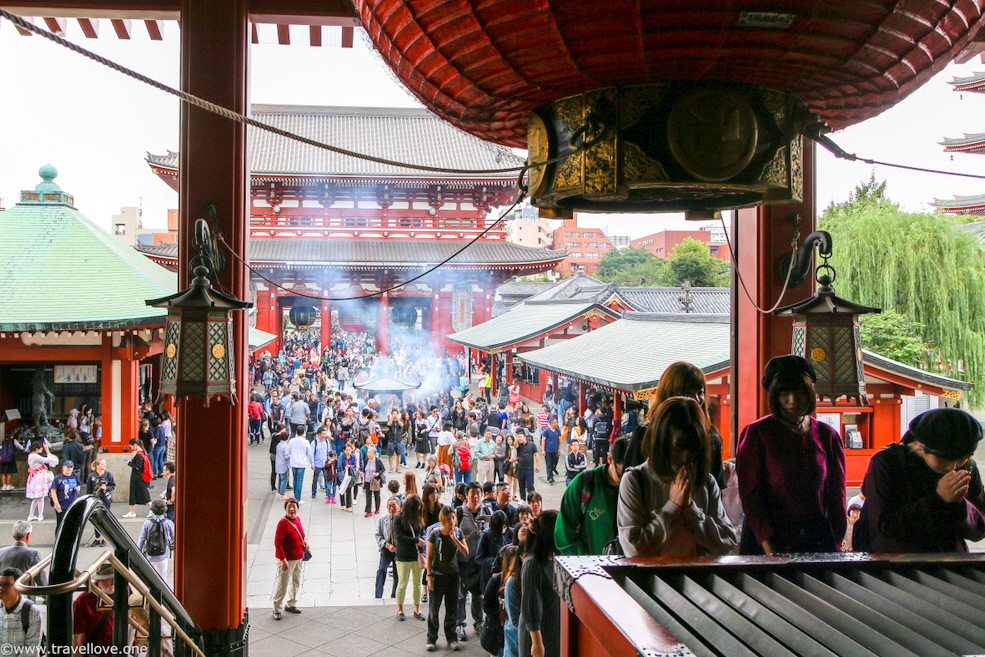
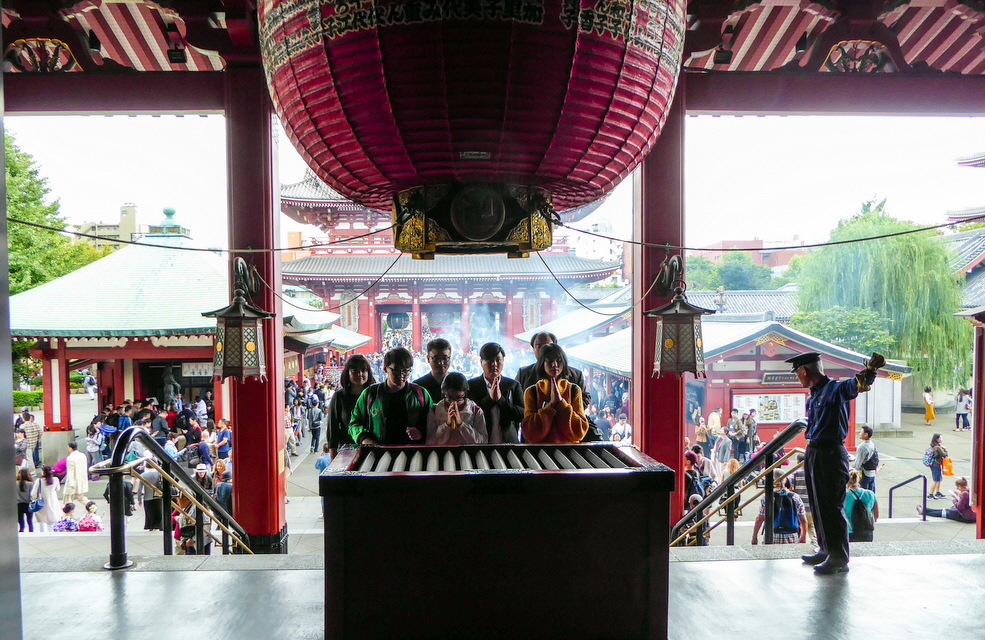
After we had met again in the vestibule, we went to the side of one of the buildings where you could donate some money and get a divination in return. You had to shake a metal container holding wooden sticks until one of the sticks fell out, indicating a drawer from which you then drew a piece of paper giving you your divination.
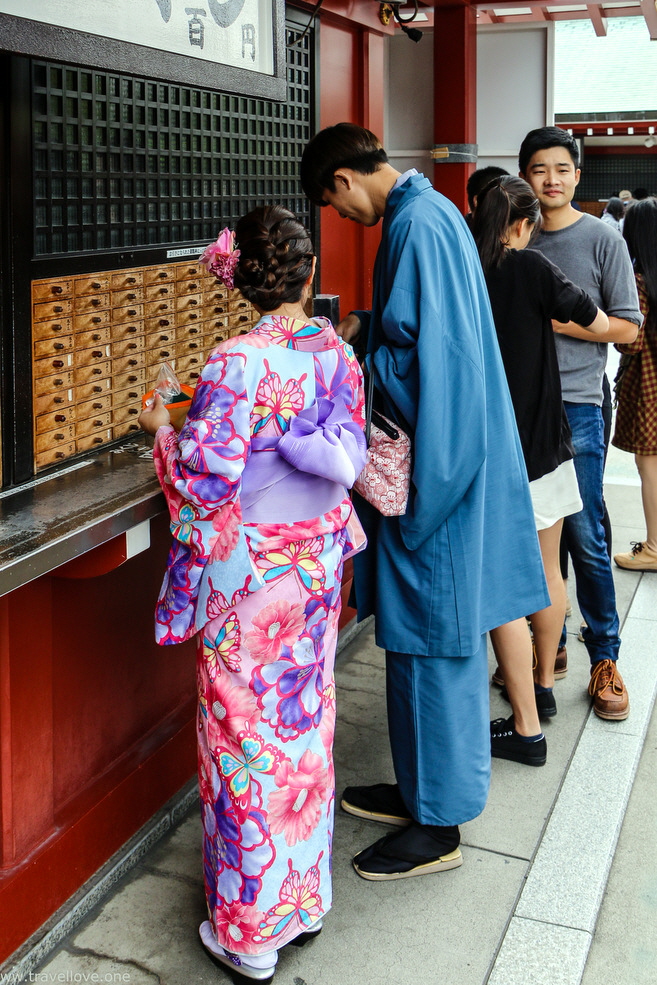
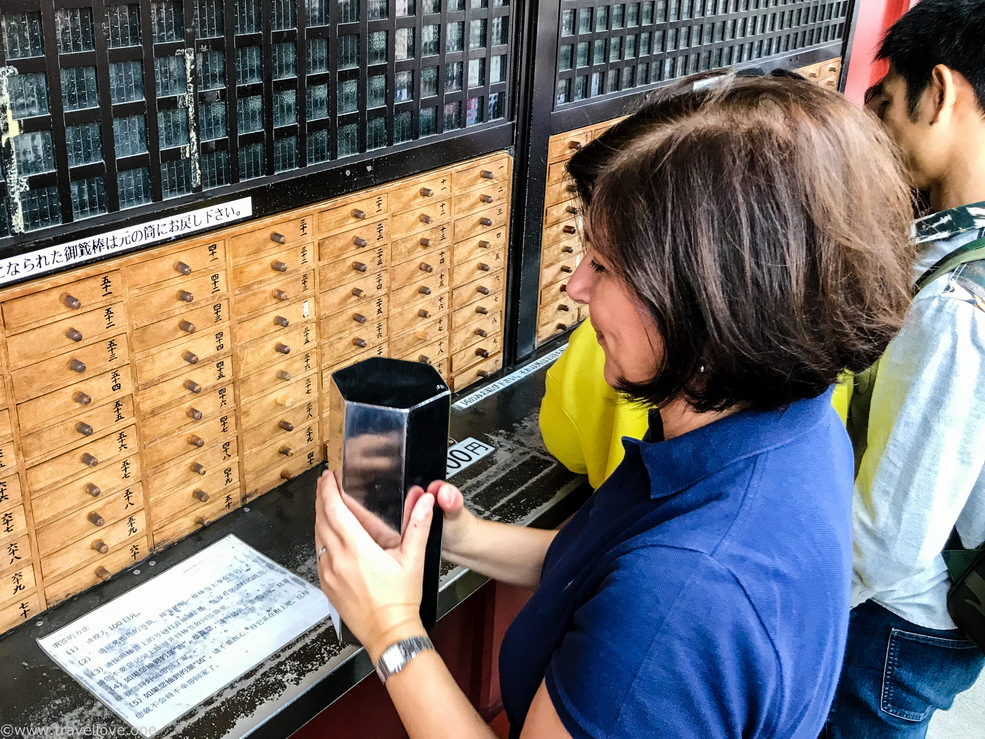
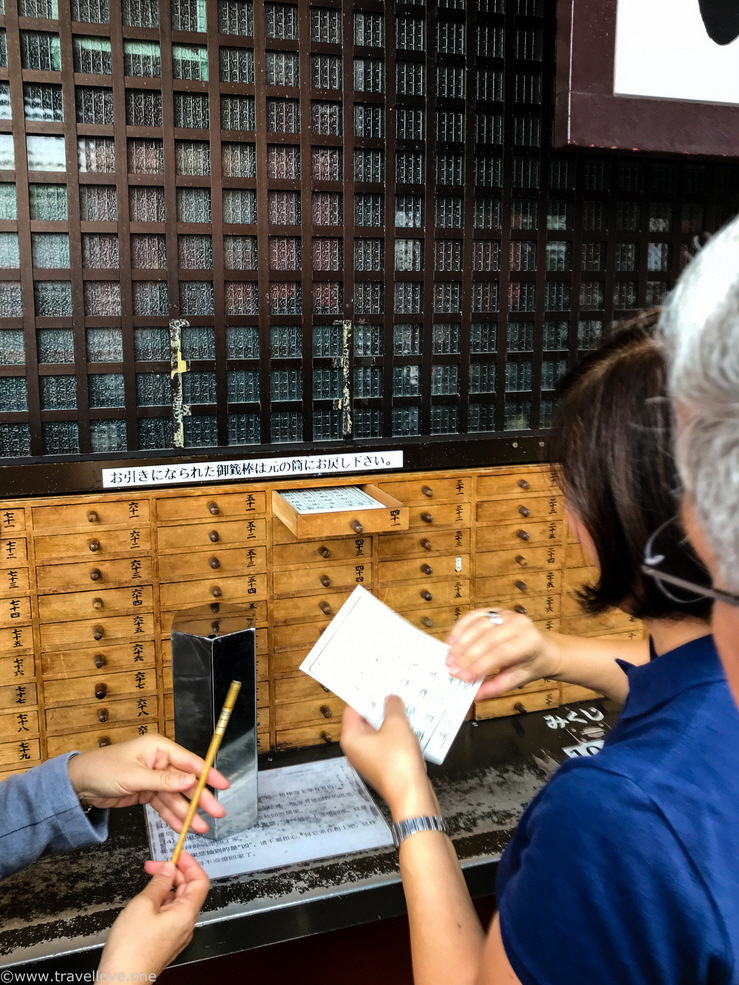
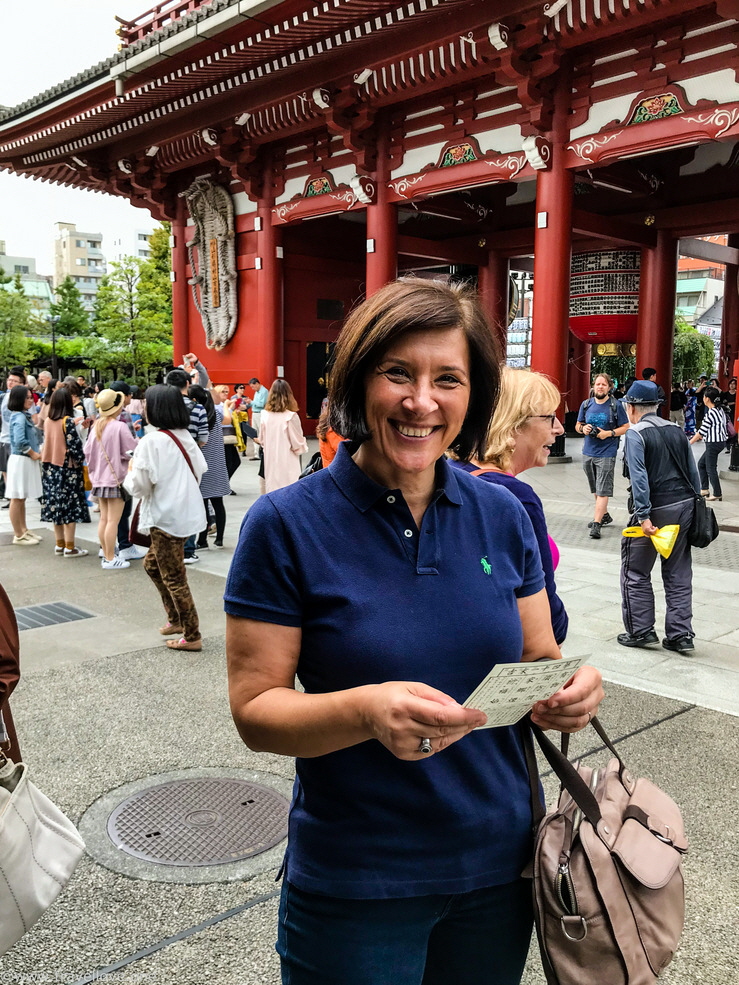
On our way back along the many shops offering all kinds of sweets and rice crackers, we noticed one shop selling vinegar juices, which Birgit had to try at once.
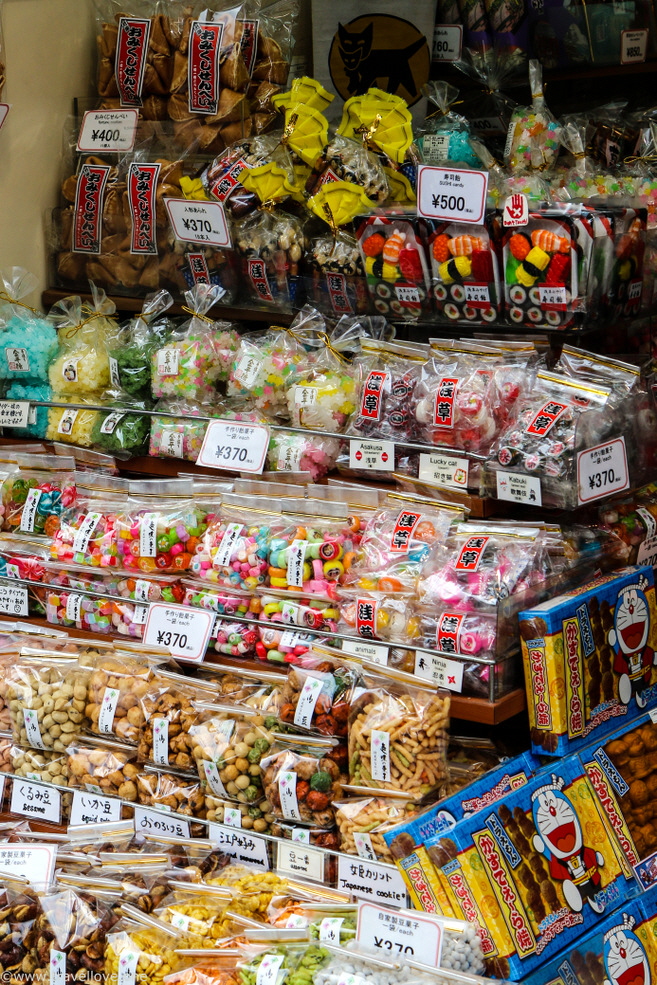
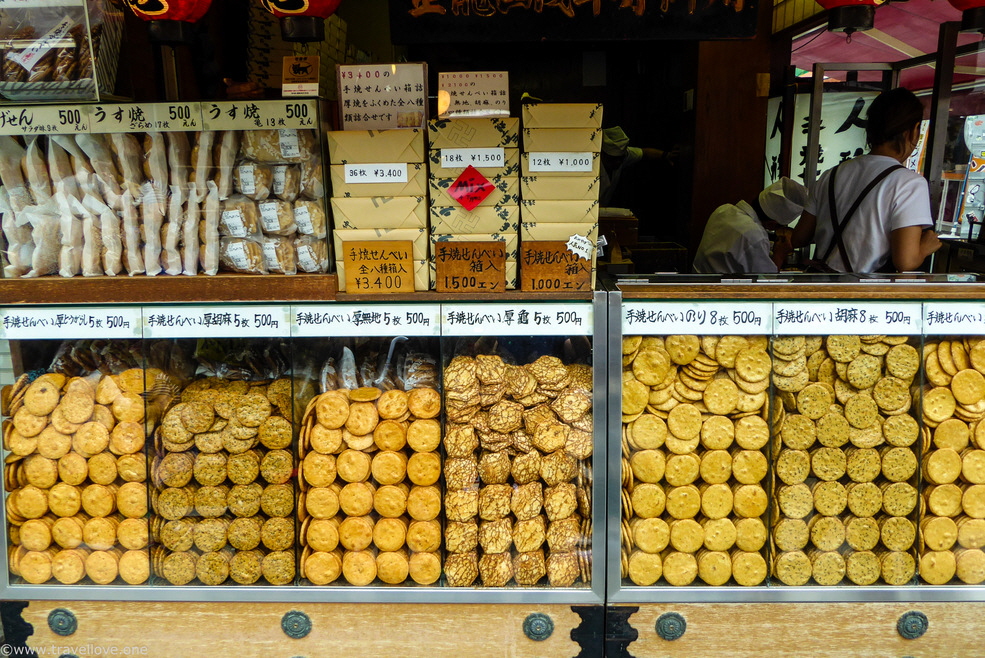
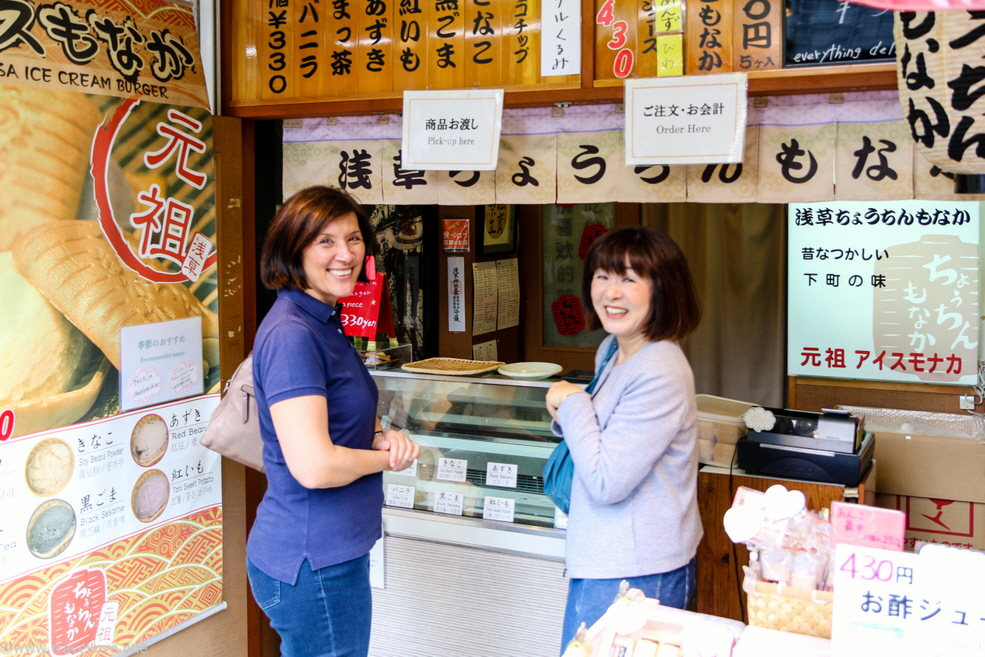
Refreshed from the sourly drink we took another subway to Akihabara, our next destination.
Akihabara is also known as Electronic Town. Hundreds of electronics stores characterize the streetscape with their enormous billboards. It hosts the headquarters of stores like Radio Kaikan and Yodobashi Camera and is also the Mecca of “Otaku”, hardcore fans of manga, anime and science fiction.
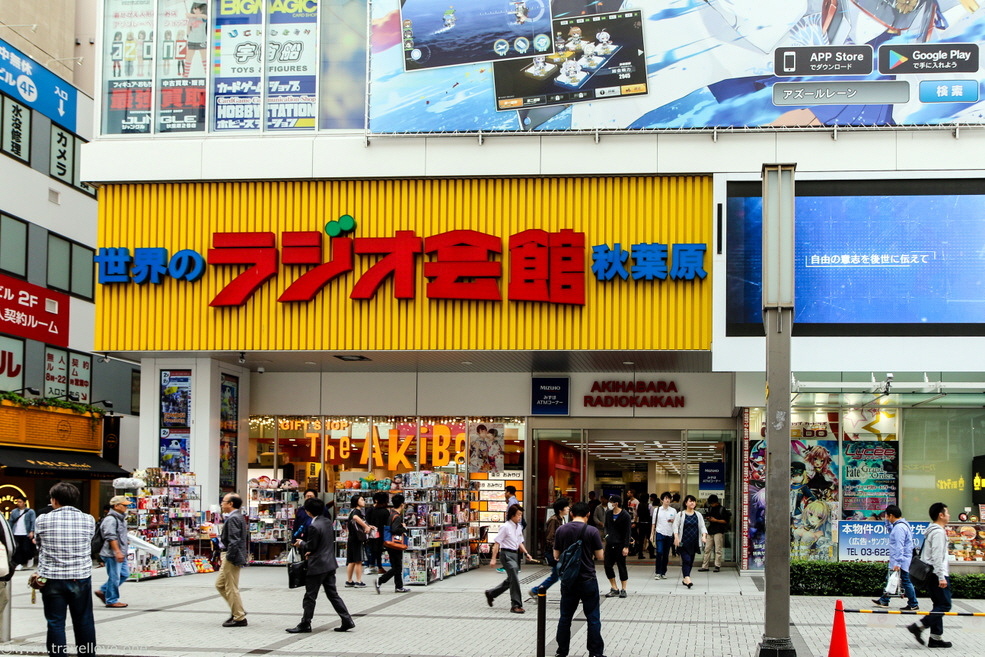
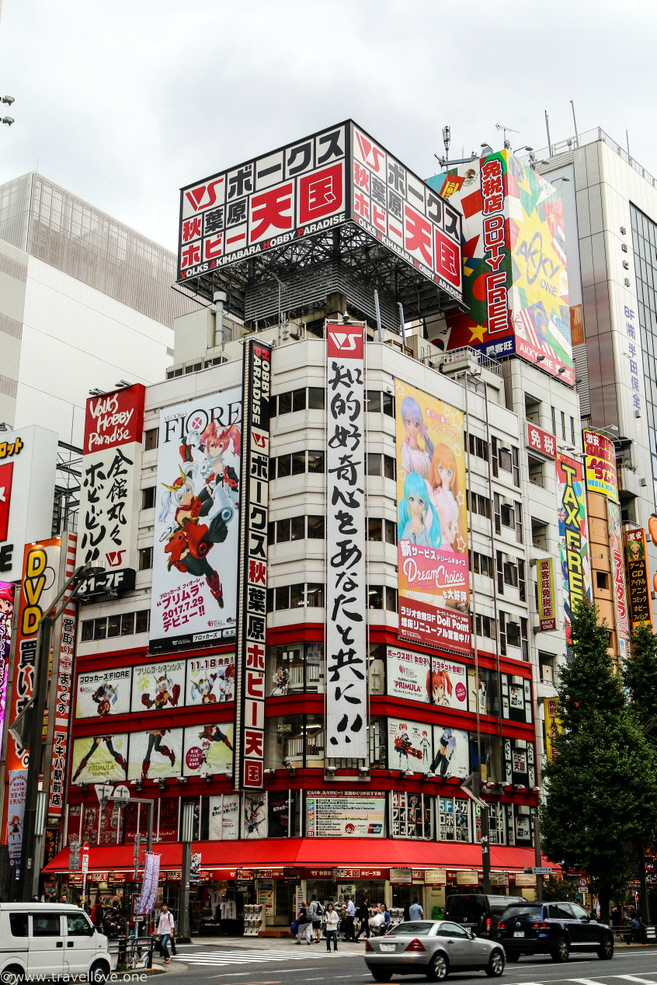
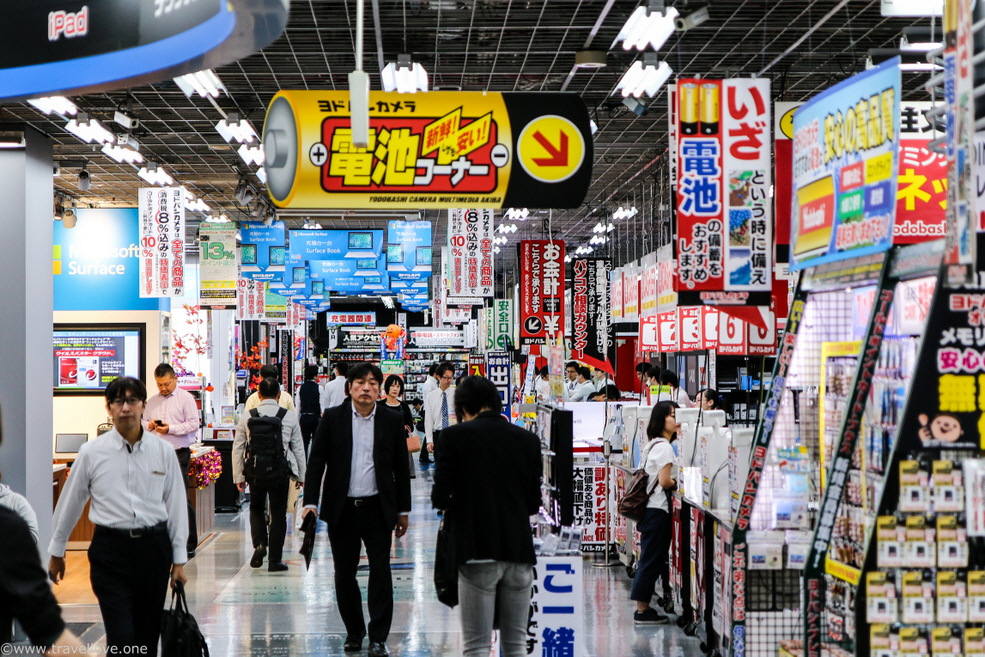
In the street, young ladies in maid uniforms distributed invitations to so-called „Maid Cafés“. In such cafés, girls in maid or school uniforms serve the mainly - but not exclusively - male guests, address them as “Master” and “Mistress”, decorate their dishes with smileys and hearts.
Besides hand and foot massages, the ultimate treat happening in those places is the cleaning of the ears – apparently a traditional gesture of intimacy in Japan. Other places, other customs...
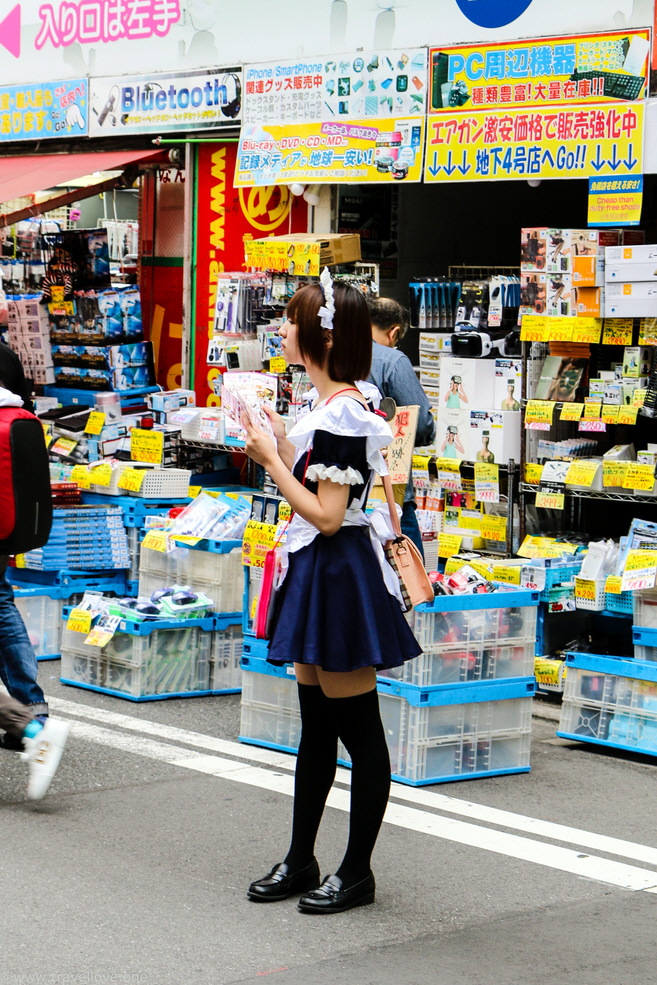
From here we went to Shibuya, where Yoko showed us the the intersection we already knew from the day before and walked us through the crowded streets. We also passed the department store that Birgit and I had visited the previous night, and Yoko explained that it was quite iconic with the young generation.
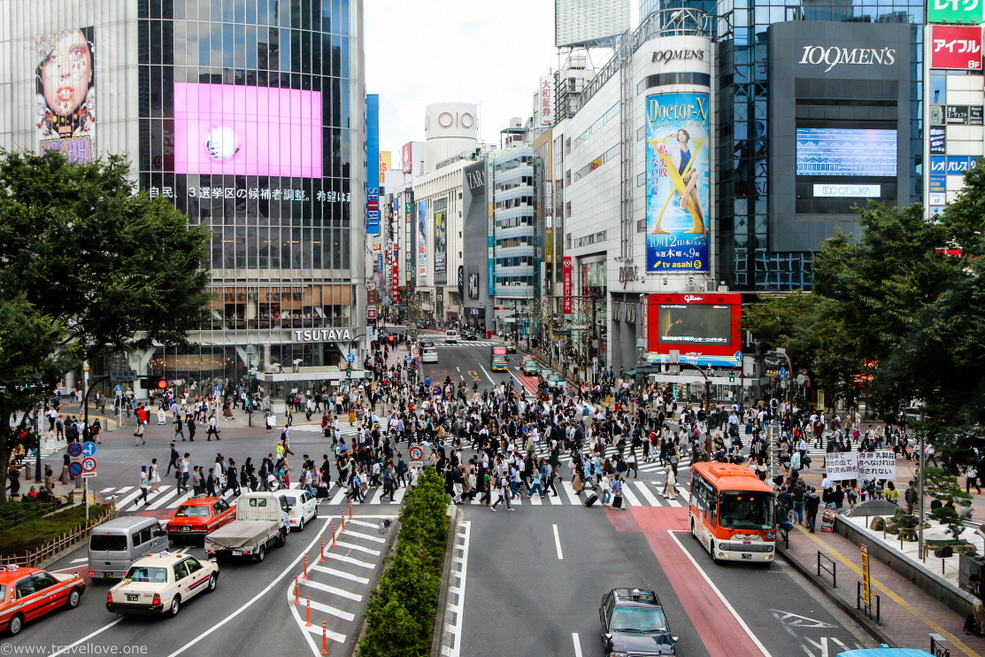
From Shibuya we took the subway to Harajuku Station. By the way, the use of the subway here was just as orderly as the use of the MRT in Singapore. The passengers acted in a very organized manner, lining up in waiting lines marked on the floor, and there was hardly any hustle.
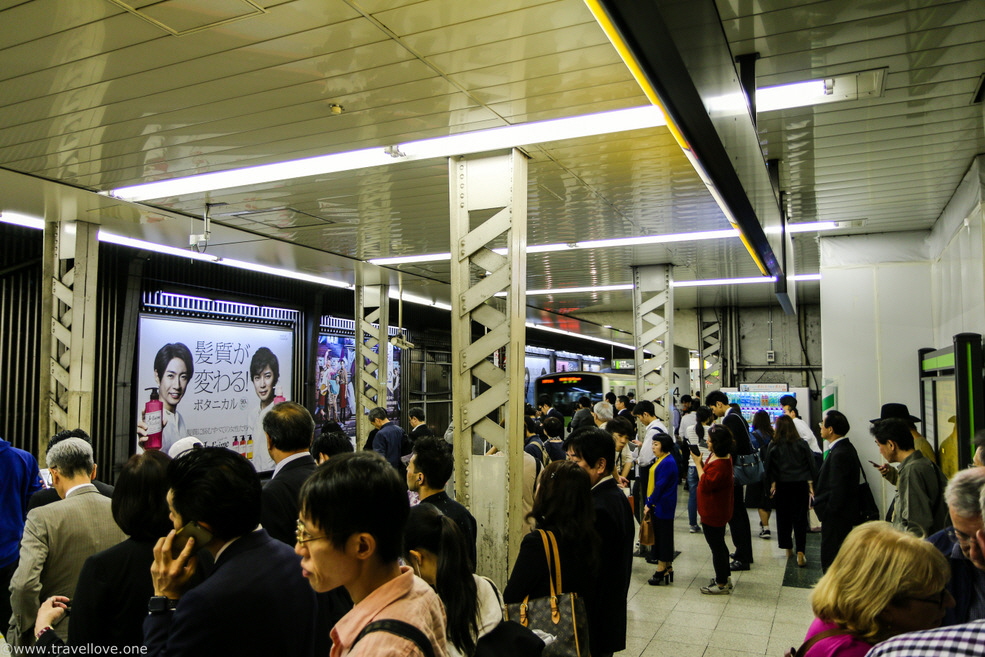
Once we arrived at Harajuku, we headed towards Yoyogi Park, home to the Meiji shrine.
To enter the park, you pass through a giant torii gate. Torii are elements of traditional Japanese architecture and as such real or symbolic entrance gates of a (Shinto) shrine.
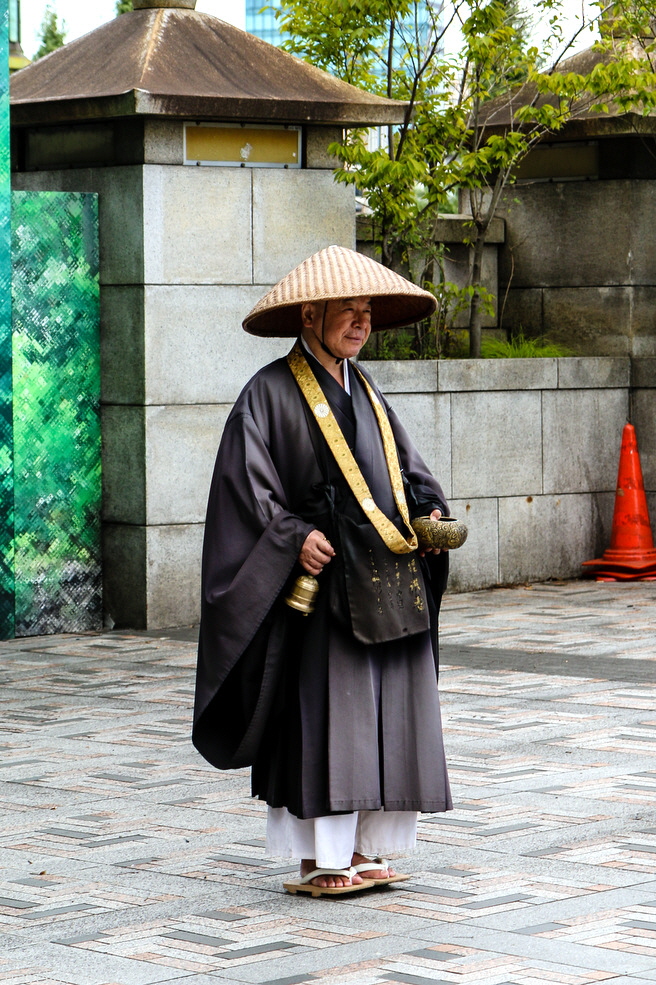
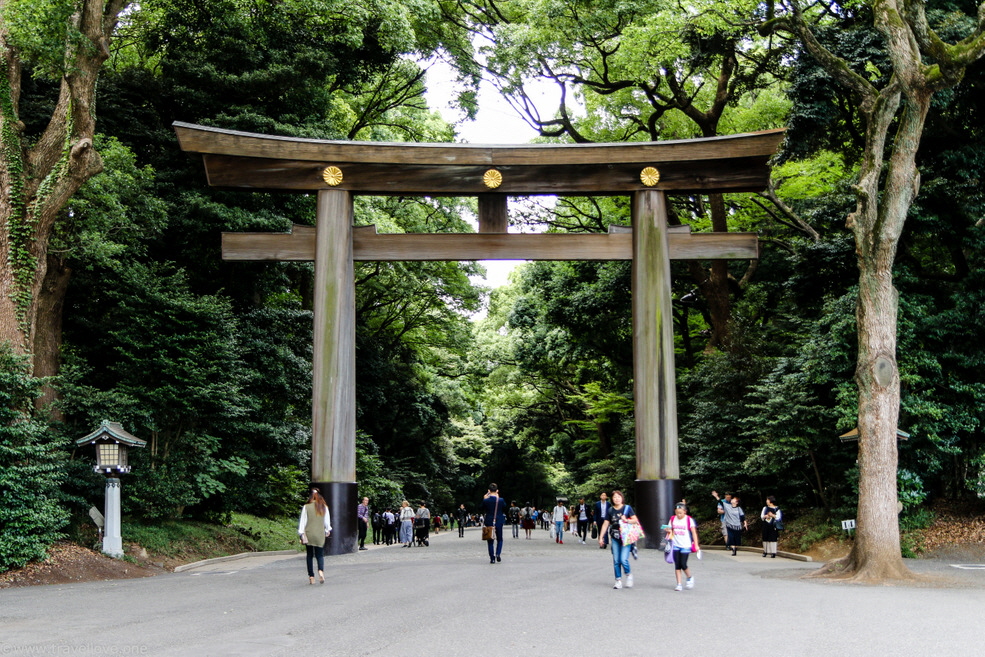
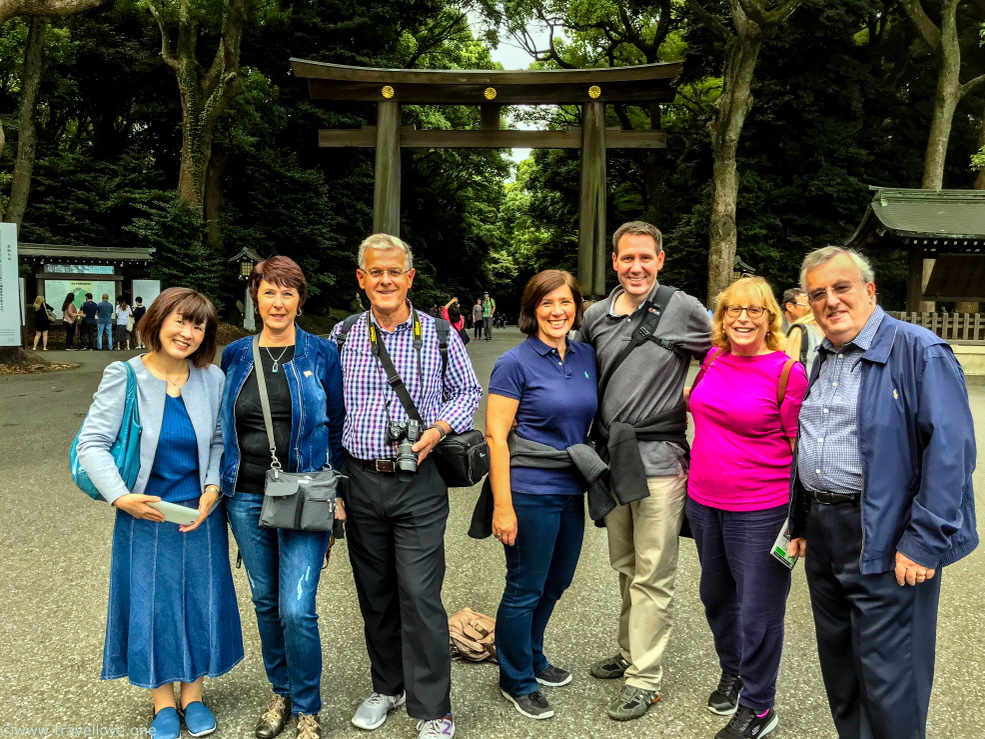
The passing through the torii was like the crossing of an invisible border into a different world. All of a sudden we found ourselves in a dense, peaceful forest. The sounds of the city around us fell silent and the fresh, cool air was filled with the chirping of many birds.
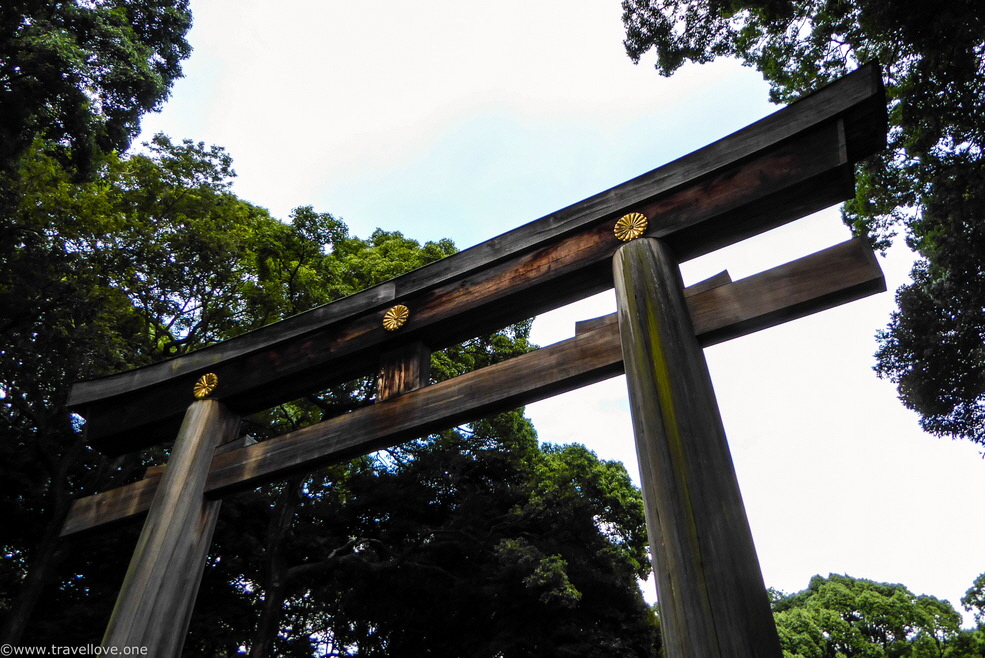
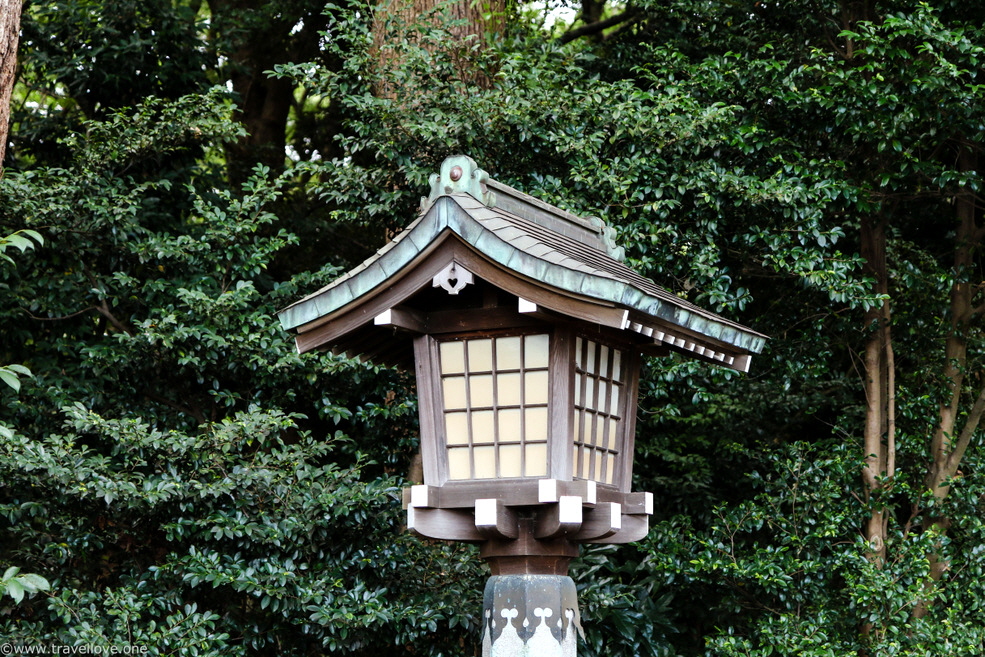
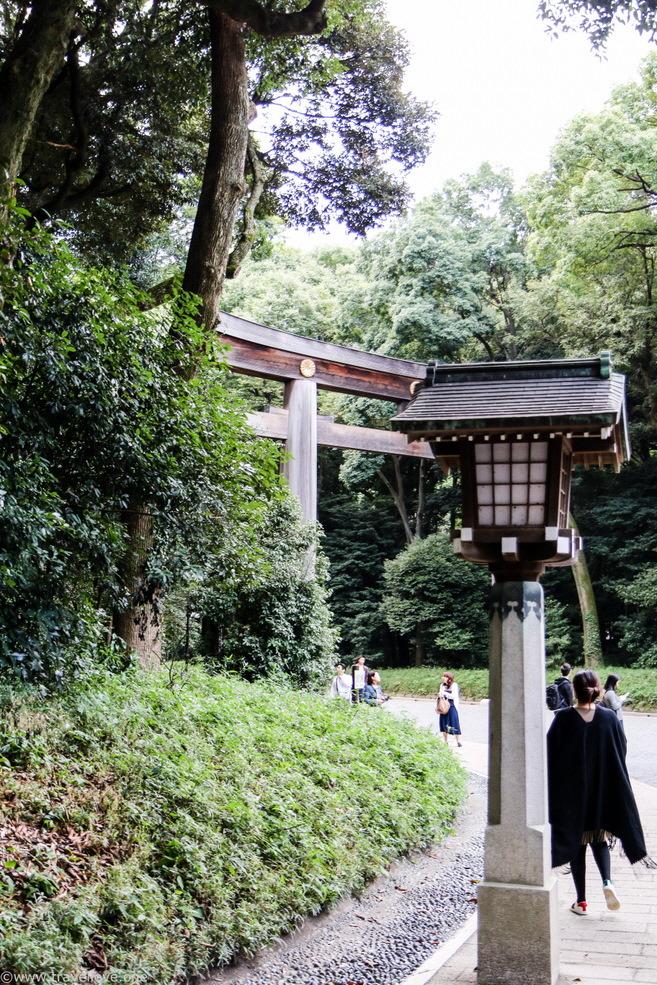
The paths were very wide and only paved on the sides. Yoko asked us, very reservedly and almost timidly, to please stay on the sides. She explained that the middle part was reserved for the emperor. She only shook her head at some young Japanese who wouldn’t respect this rule.
At the entrance to the Meiji Shrine we came across a large collection of wine barrels. They were donated by important wineries from Burgundy in France. During the time of Emperor Meiji (1868-1912) Japan continued to open up to the west, and wine symbolized the cultural exchange with France.
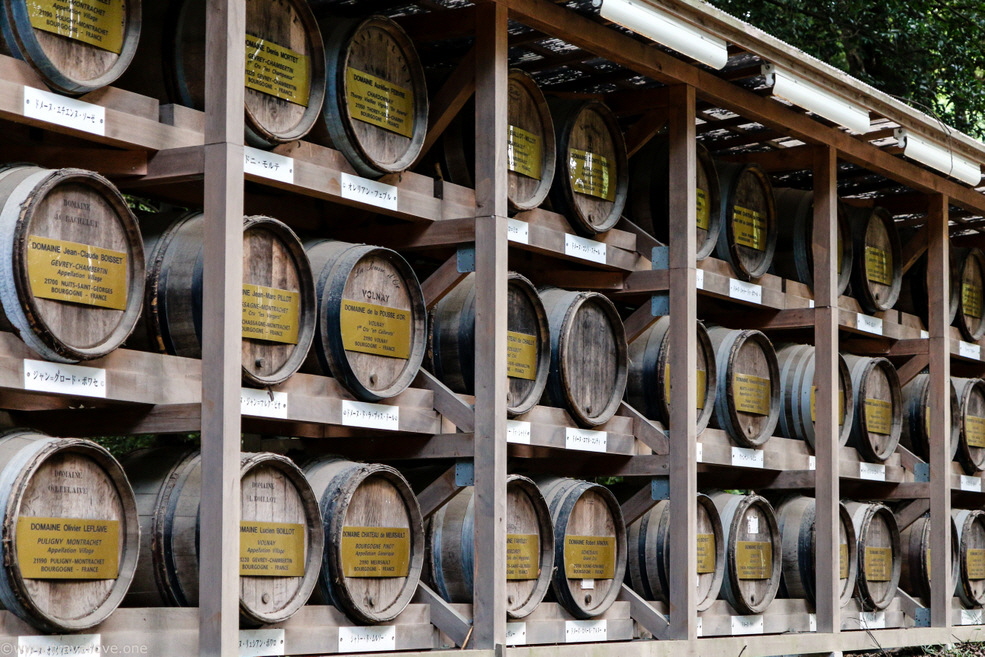
On the opposite side, an impressive number of colorfully painted sake barrels, called Kazaridaru, lined the way. In Japan, sake is traditionally the link between man and the gods. Every year, the sake barrels are donated by sake breweries and considered as offerings to the deities of the shrines.
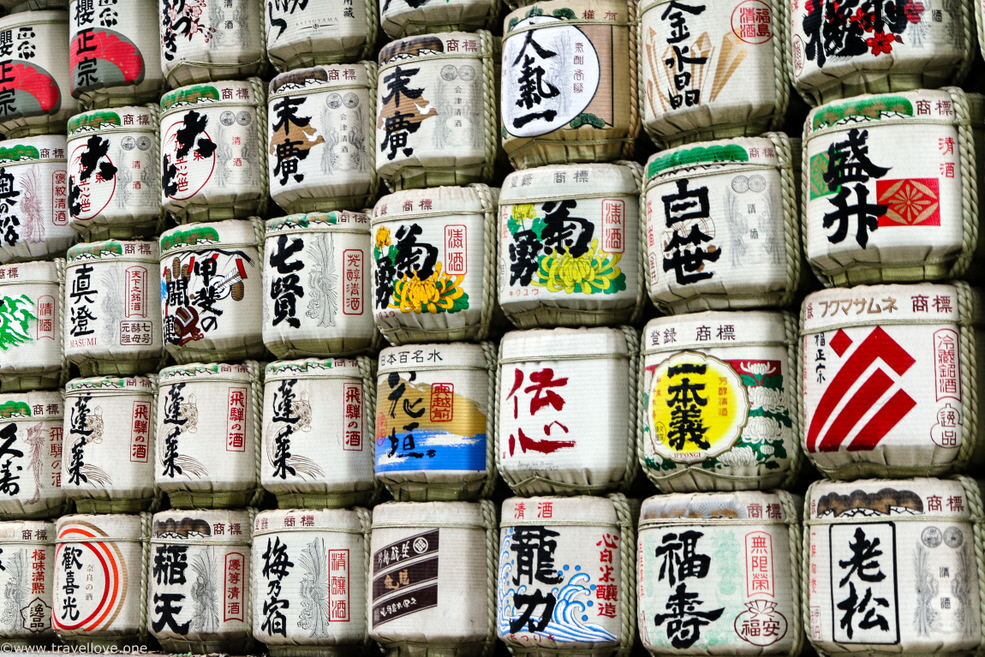
Just beyond was the entrance to the shrine with a well just in front of it. Before entering a temple or a shrine, it is custom to ritually cleanse yourself. To do this, you take a ladle to scoop some water from the well and rinse your hands in a specific order, take some water with your mouth from your hand (thereby not touching the ladle with your lips) and then rinse the ladle itself with a tilting motion.
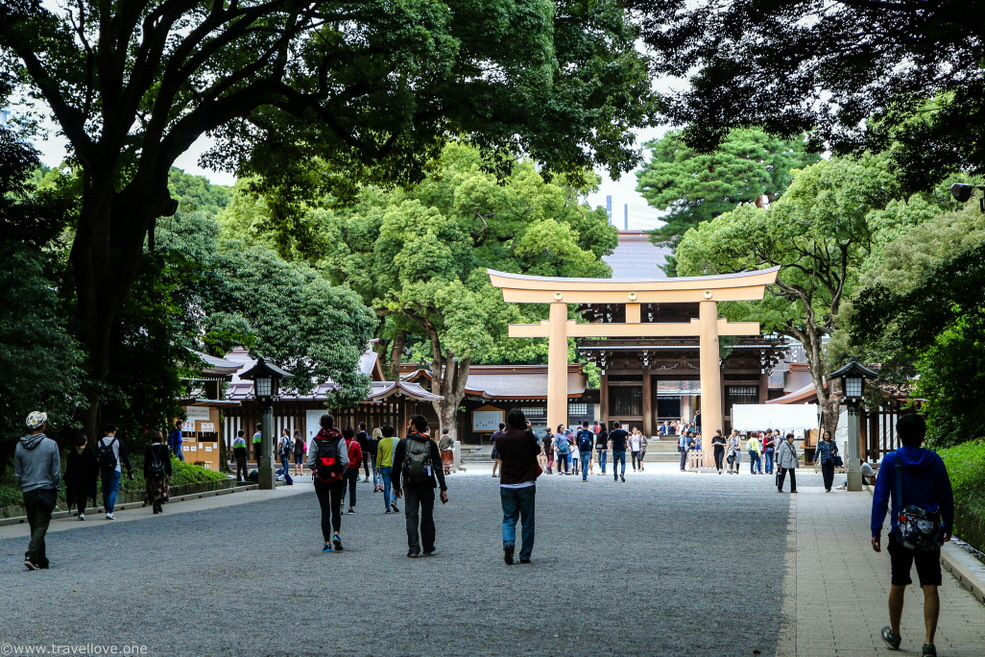
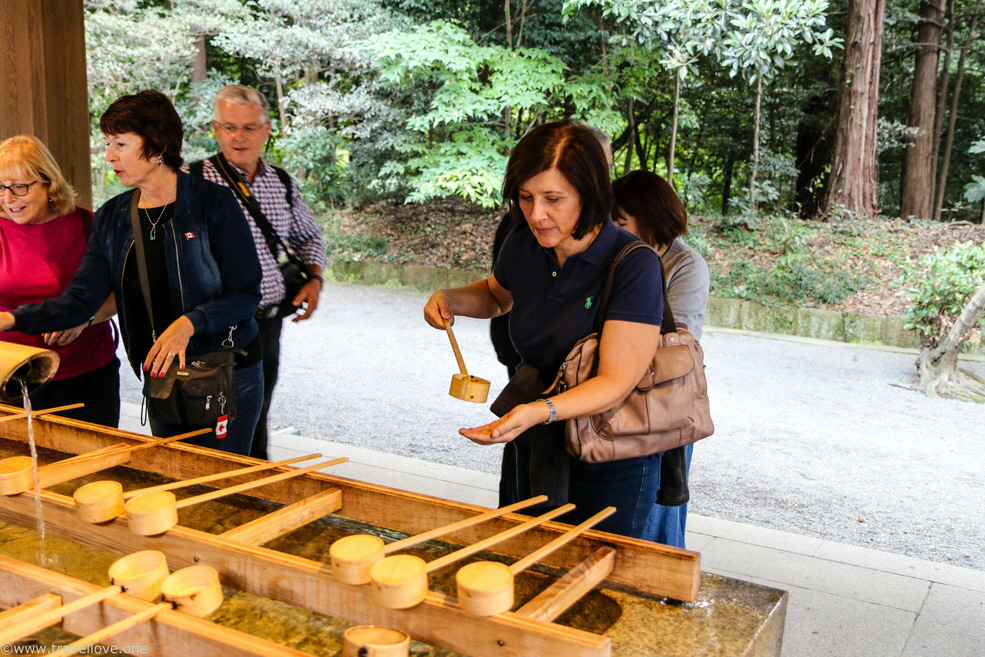
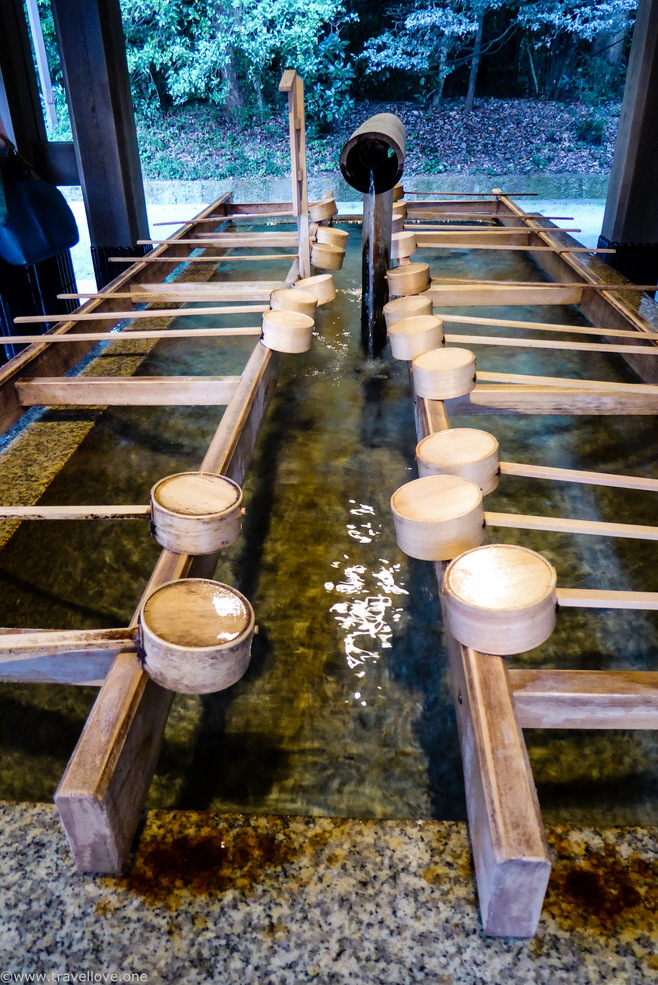
We then entered the inner area of the temple complex through a smaller torii gate.
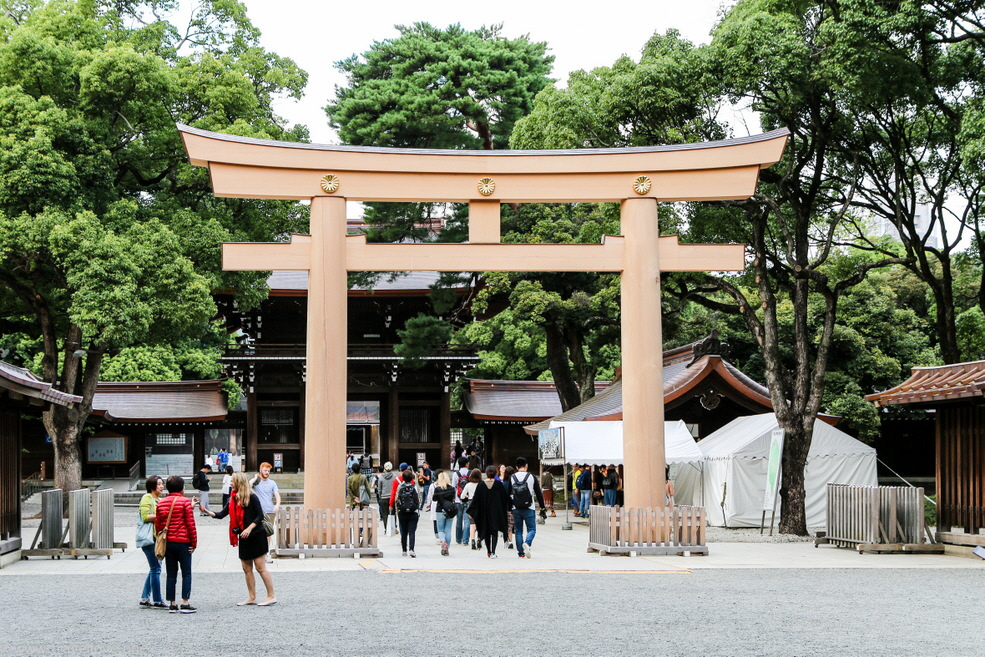
Two big camphor trees are growing behind the gate. They were planted in 1920 and have since grown under the protection of the gods. Known as “Meoto Kuso” or man and woman, the mated trees have become the symbol of happy marriage and harmony within the family. A sign wishes visitors that the power of the trees may bring them luck.
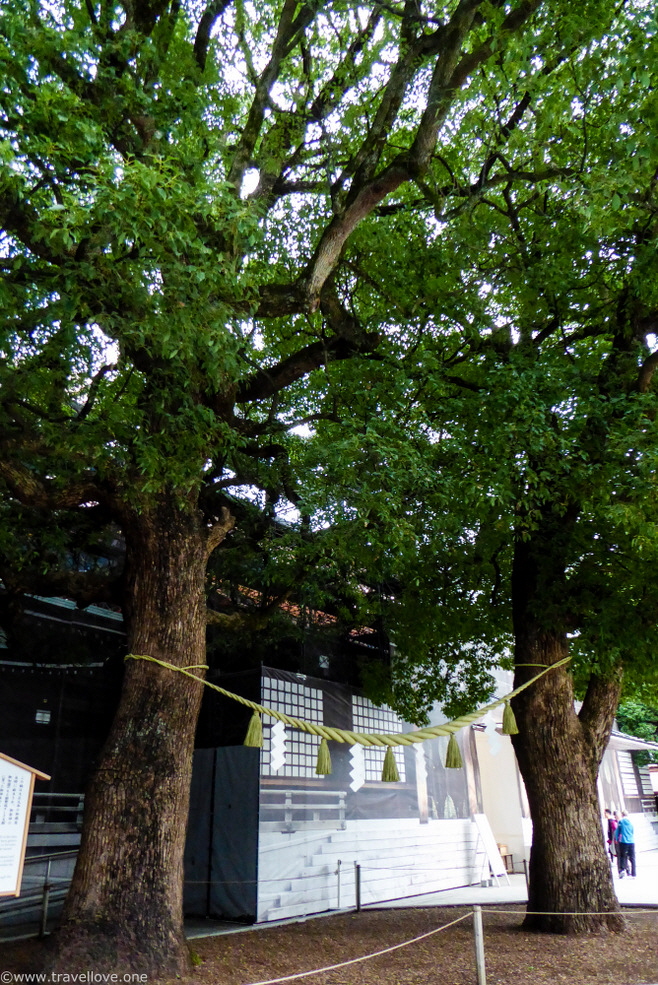
Through another magnificent gate building we reached the inner courtyard of the shrine.
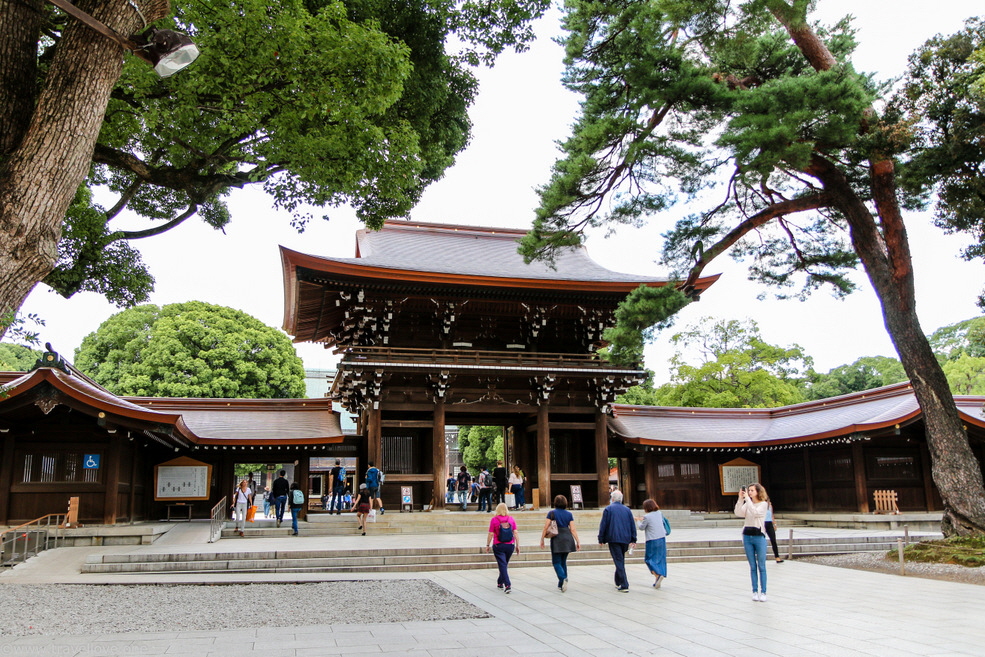
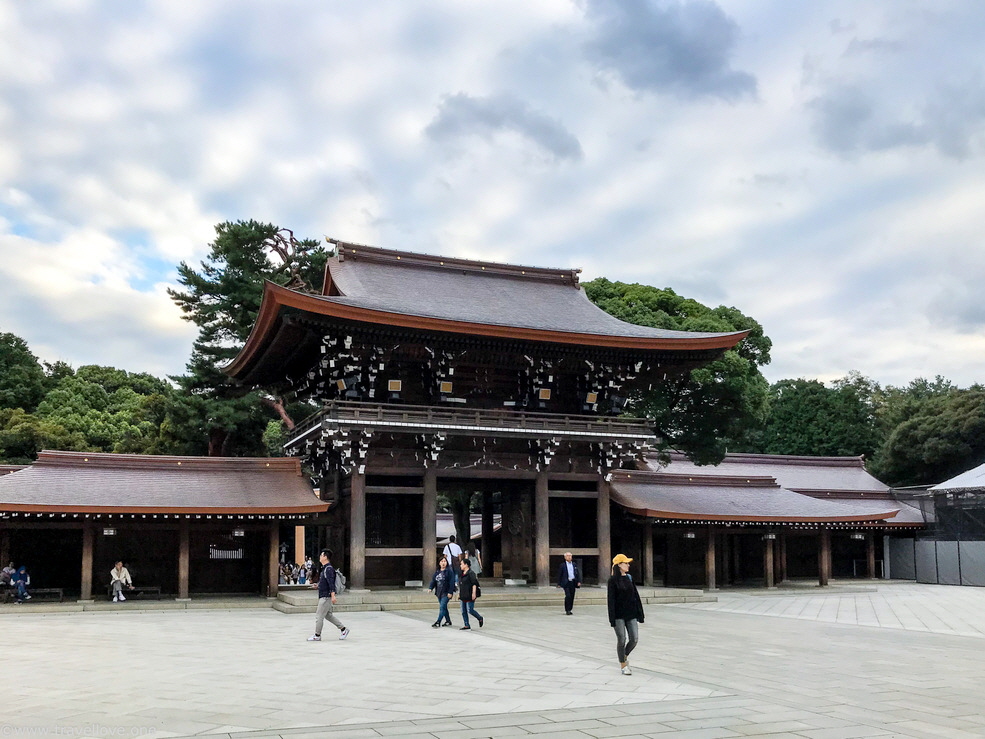
The roof of the buildings is held by so-called dougongs (Chinese architecture). Incidentally, I had watched a documentary just before our trip. Those puzzles of loosely interlocking wooden brackets are incredibly robust and even withstood earthquakes of yet unmeasured strengths in test setups. In addition, they are very beautiful.
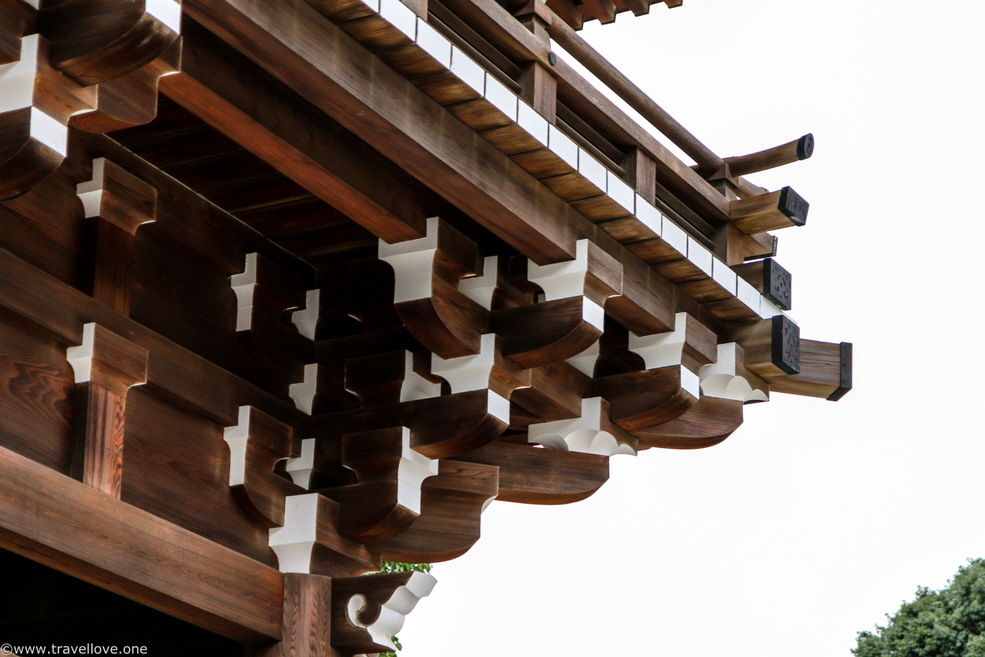
The main building of the shrine, constructed after the emperor’s death in 1920, is currently being renovated for its 100th anniversary in 2020 and was, therefore, hidden behind tarpaulins.
The area in front of the shrine is dominated by two enormous camphor trees surrounded by a „wall of wishes“. You can buy small wooden boards called “Emas”, on which you write your wishes before hanging them on the wall.
Naturally, the wishes here were very diverse.
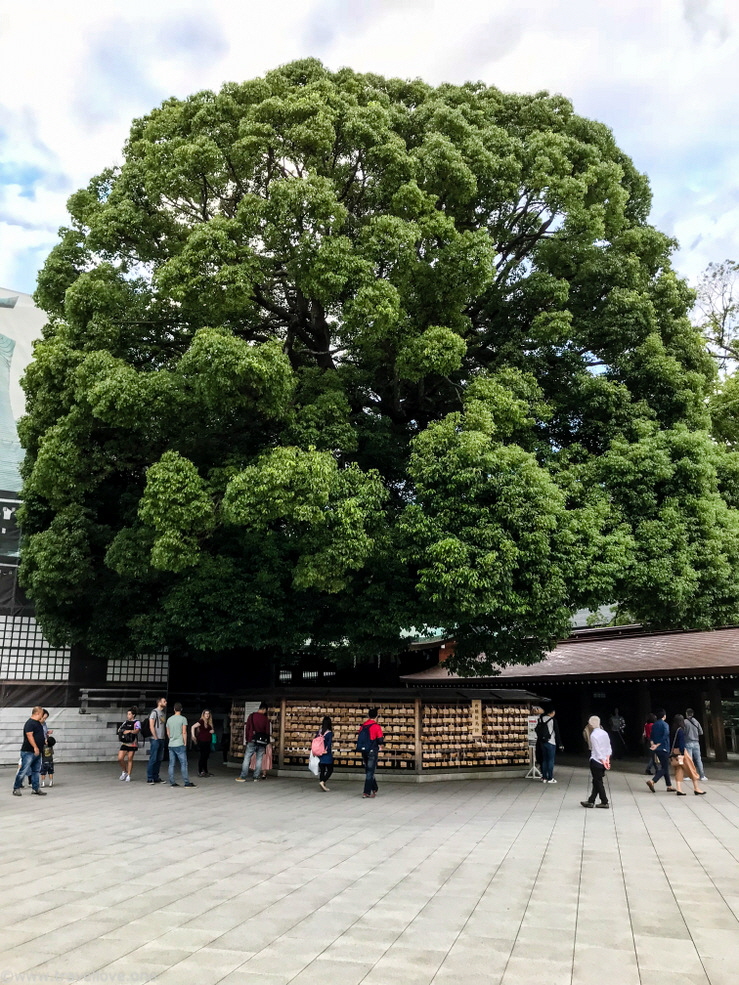
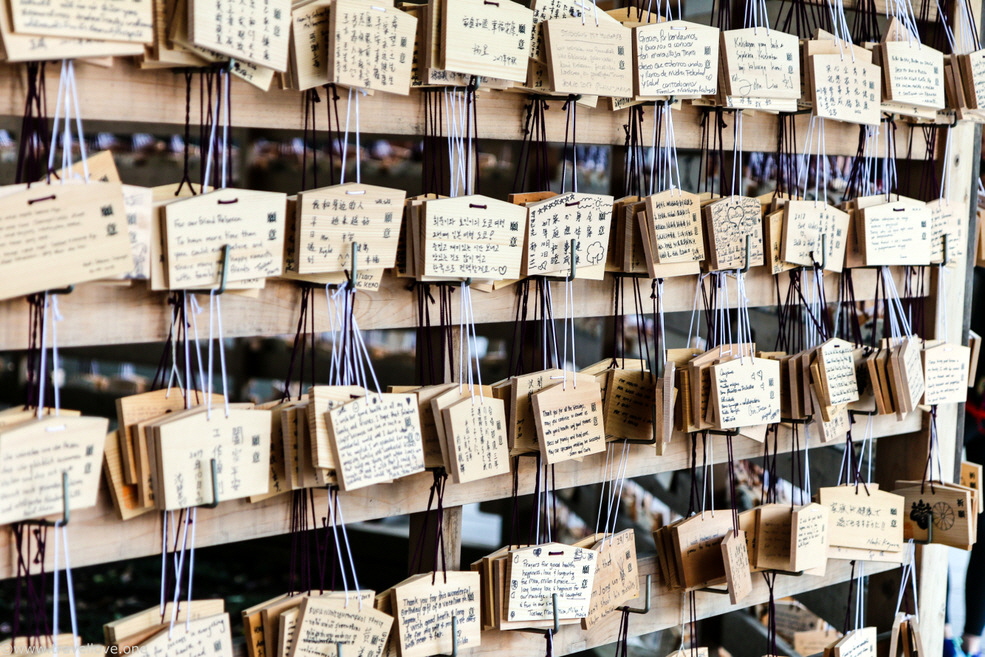
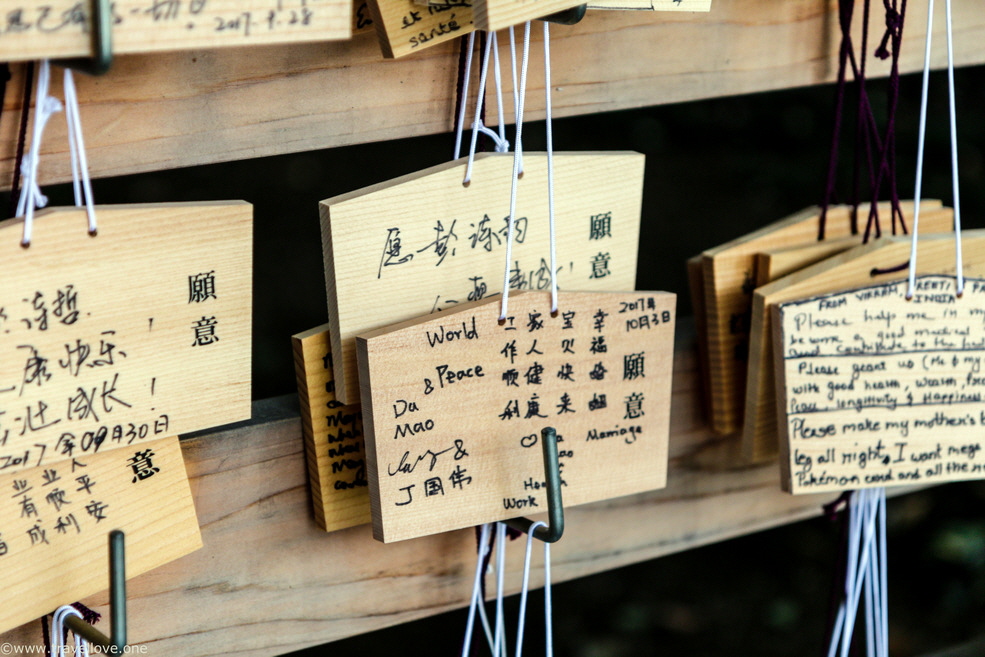
We left the oasis of this quiet park via a side path and rejoined Tokyo’s other bustling attraction nearby, Takeshita Street.
The pedestrian mall is right in the middle of Harajuku. At a length of 350 m (1,150 ft.) fashion and accessories shops for young people as well as restaurants and crêperies with the wildest creations are lined up.
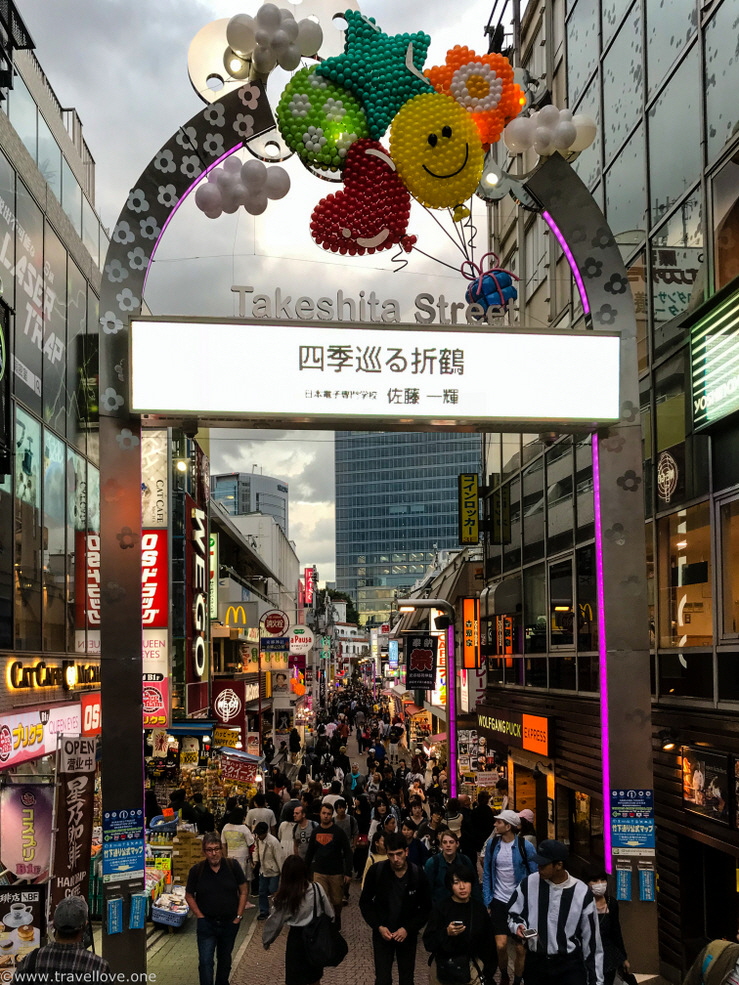
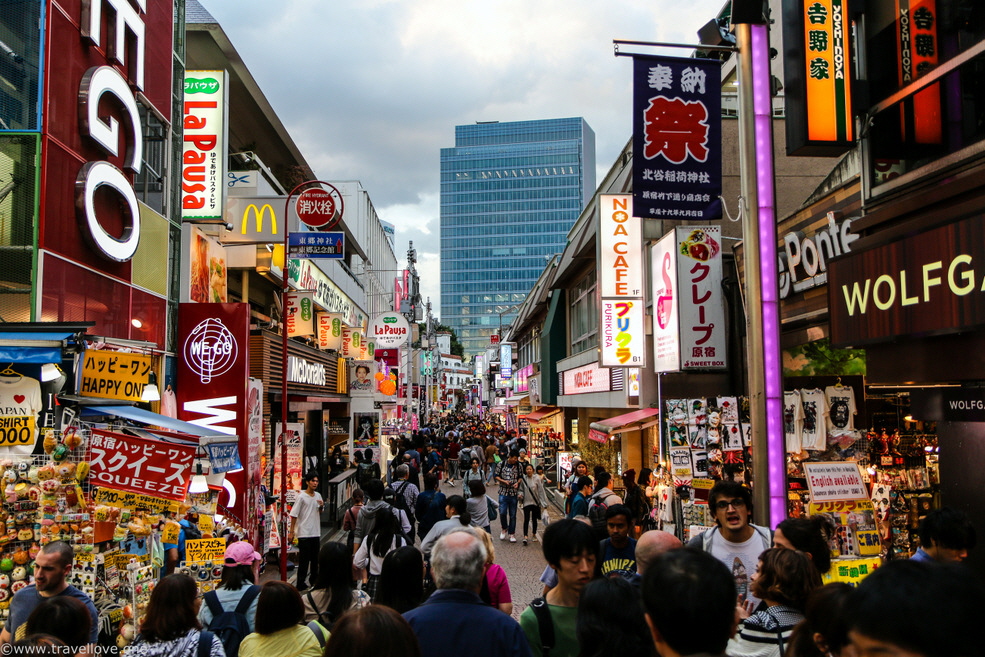
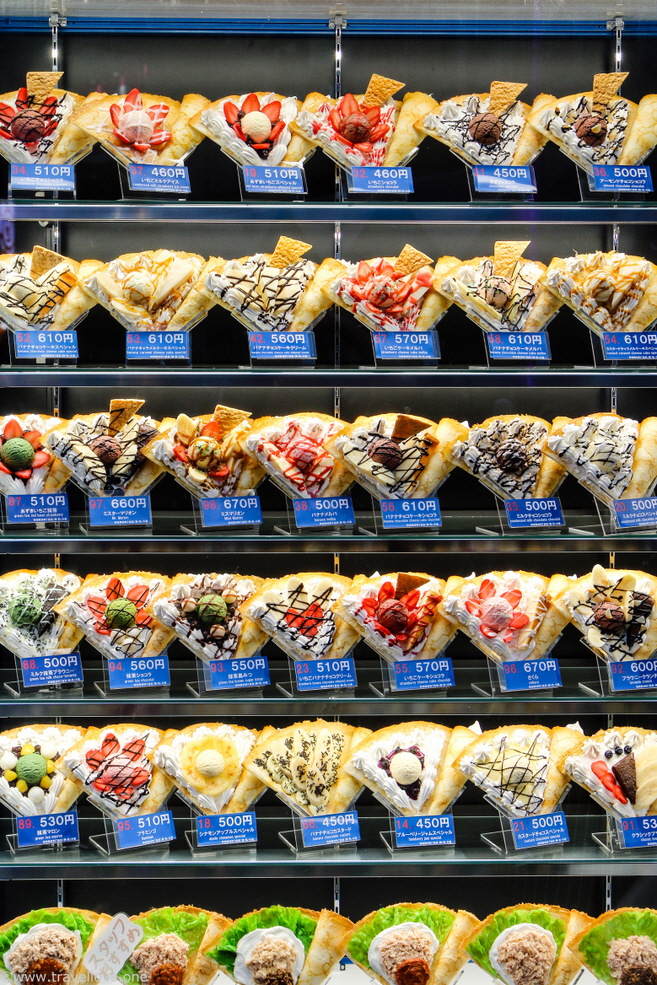
From the end of the street, Yoko walked us back to Harajuku Subway Station, where she said goodbye with a little gift for each of us. Our group also parted here. Birgit and I followed Otemosando Street, Tokyo’s equivalent to the Champs Elysées in Paris. Luxury shops such as Louis Vuitton, Armani and expensive restaurants and cafés were stringed together as closely as the inexpensive boutiques on Takeshita Street.
As if we hadn’t done enough walking for the day, we continued all the way to the Shibuya crossing. Since we had enjoyed the restaurant the previous night so much, we went there again.
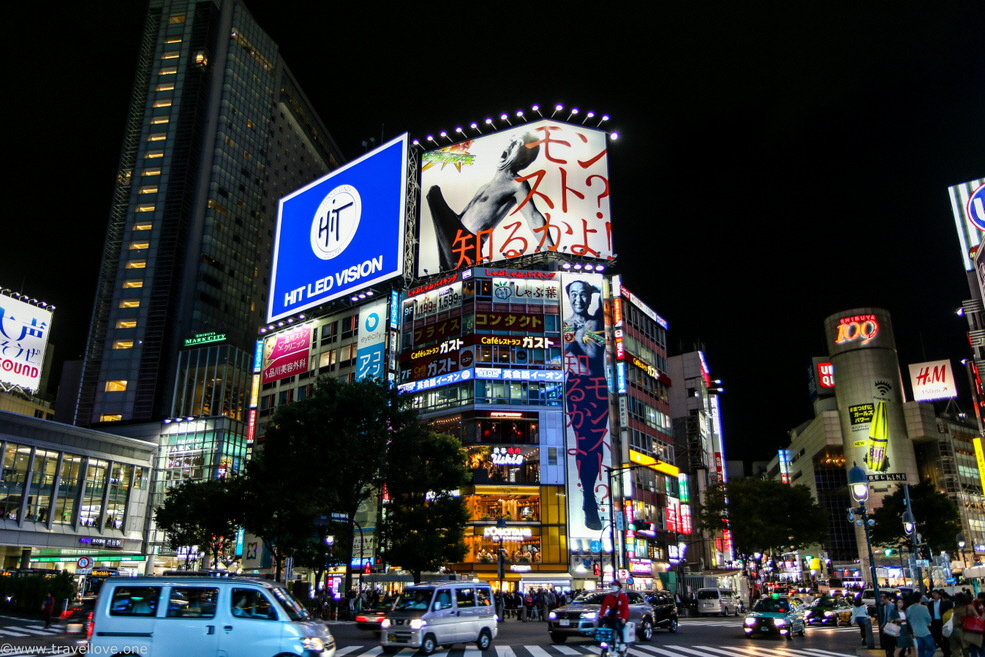
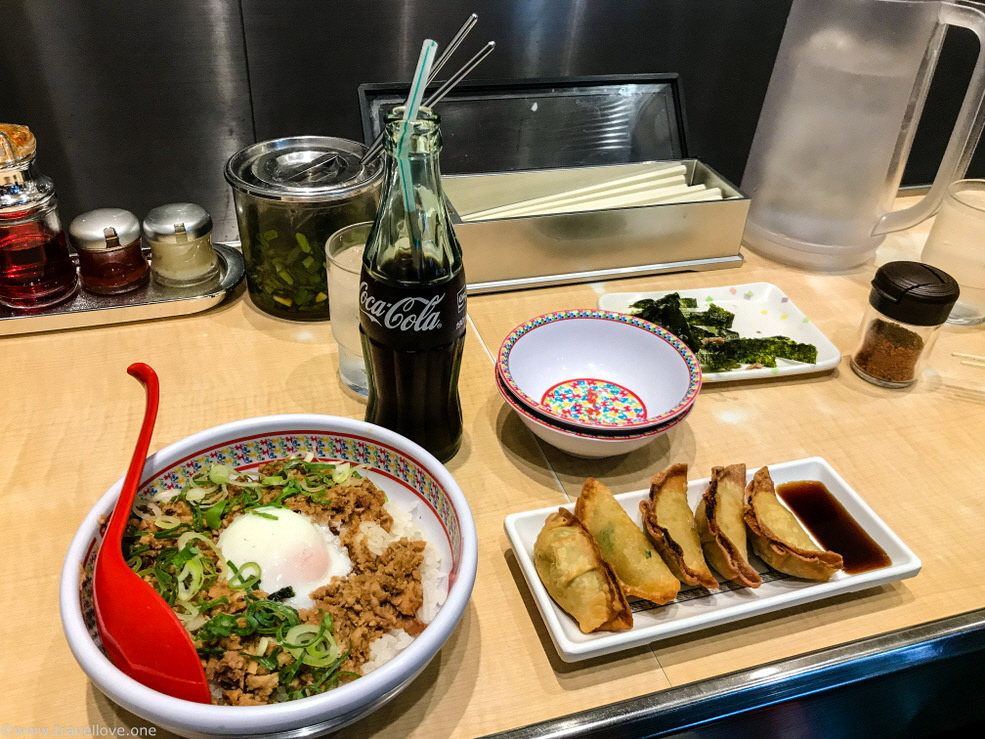
However, after dinner it didn’t take long until we had to follow the irresistible call of another place...
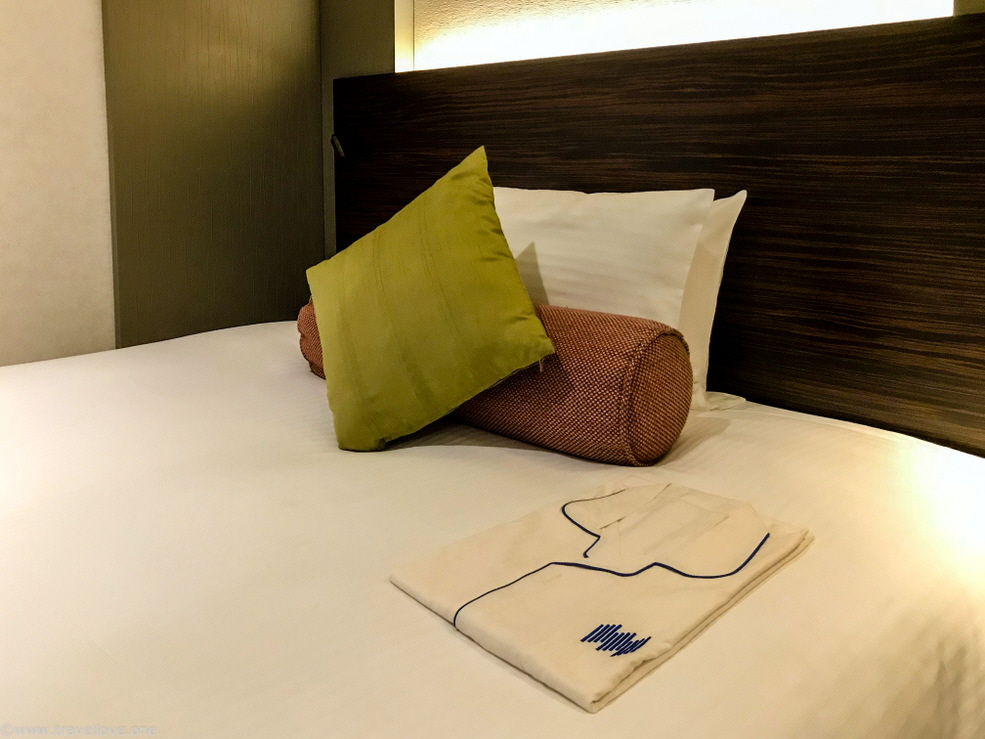
www.travellove.one • www.thecruise.report • www.travelandcruise.net
© 2021 Die Rechte an Texten, Fotos und Videos liegen beim Autor der Webseite. Die Nutzung ist nur nach ausdrücklicher Freigabe erlaubt.
